The Better Effect
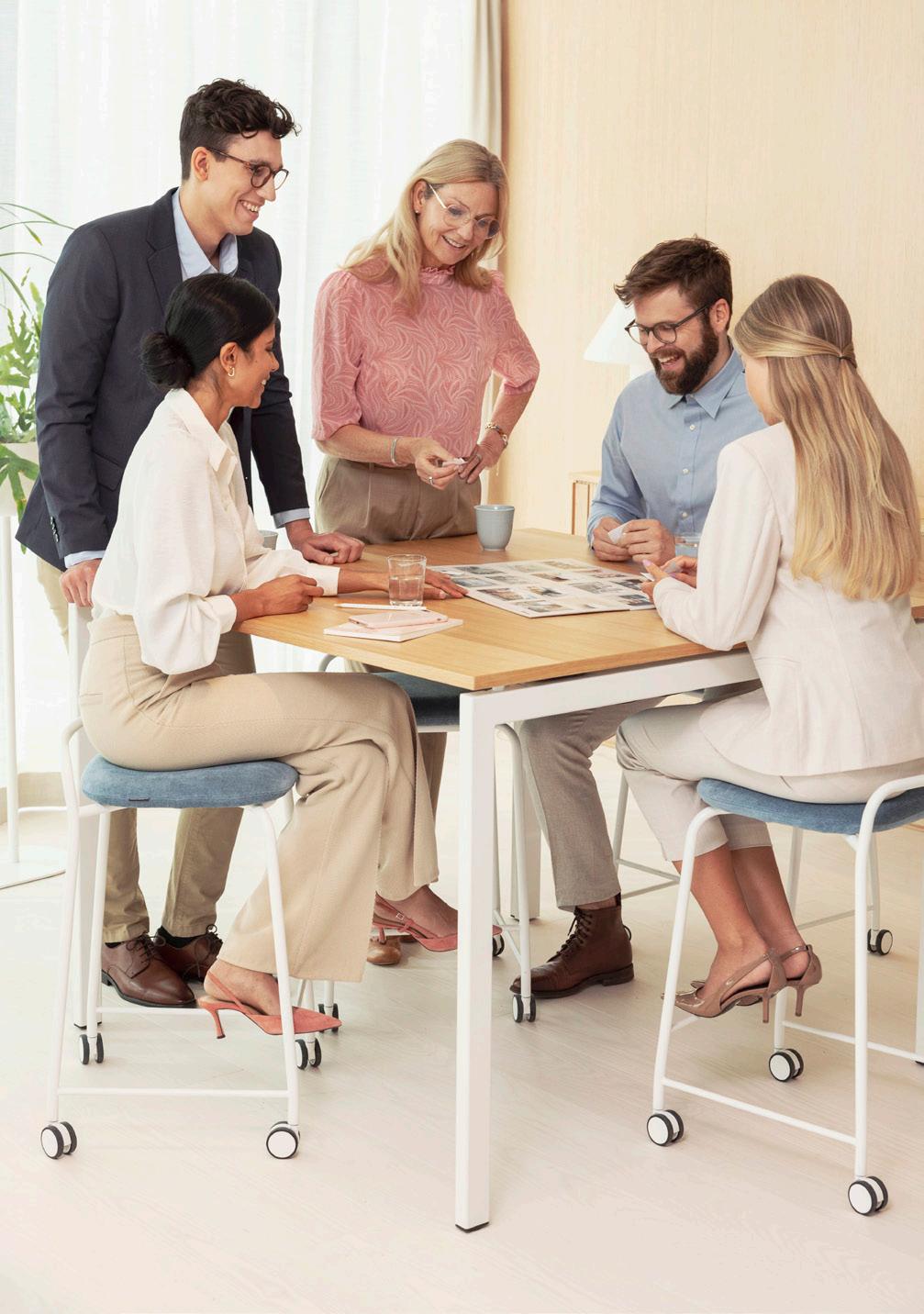
K
SUSTAINABILITY REPORT 2022
Kinnarps / Drabert / MartinStoll / Materia / NC / Skandiform
INNARPS AB GROUP'S
ABOUT THE REPORT
This sustainability report relates to the Kinnarps AB Group for the financial year 2022 (01/09/2021–31/08/2022). The previous report was published in October 2021. We follow an annual reporting cycle. This report has been prepared in accordance with the provisions of Chapter 6 of the Swedish Annual Accounts Act. The Board of Directors is responsible for the preparation of the report.

2
Contents
MESSAGE FROM THE CEO 4 THE YEAR IN BRIEF 6 SUSTAINABILITY IS PART OF OUR DNA 10 SUSTAINABILITY ALL THE WAY 14 OUR FOCUS AREAS 22 RAW MATERIALS AND RESOURCES 24 CLIMATE 30 PURE MATERIALS 36 SOCIAL RESPONSIBILITY 42 CIRCULARITY 48 ERGONOMICS 56 RISKS AND GOVERNANCE 62 AUDITOR’S STATEMENT 65
Getting better – together
The Kinnarps AB Group is one of Europe's leading suppliers of interior design solutions for offices, schools and healthcare facilities. We are a total interior solution provider and help our customers to create sustainable, future-proof spaces using our own brand portfolio, various services and complementary products. Our curiosity and interest in sustainable solutions mean that we are continually working to improve our climate impact, enhance well-being, and create timeless spaces.
In this Sustainability Report, we focus on six key areas in which all of us in the Group can work with our customers and suppliers to create a better outcome for future generations.
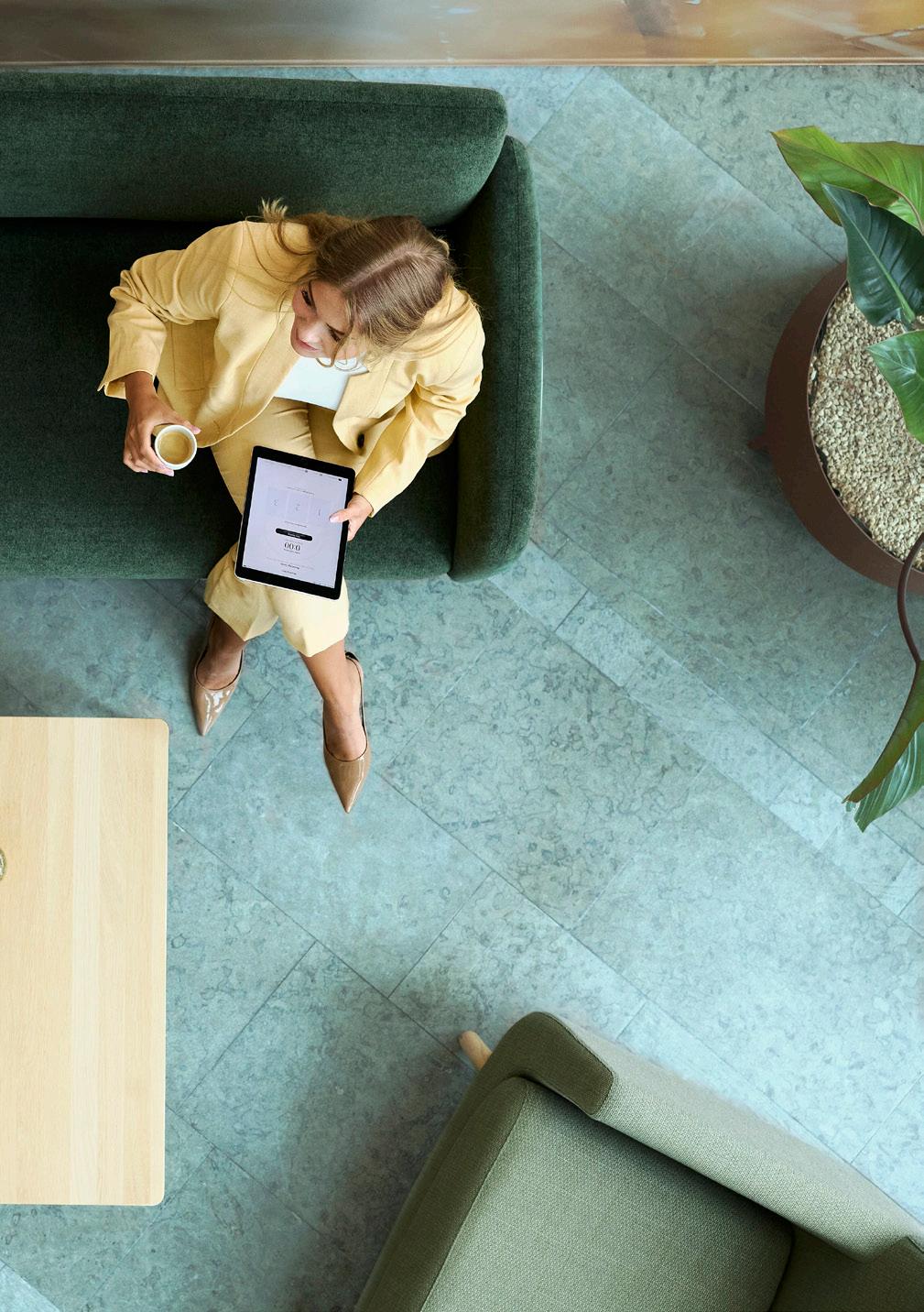
3

4
Long-term solutions create sustainability
Kinnarps works with sustainability all the way and in every single detail.

It’s important to us that our customers get value for their investment and a solution that sustains and supports their operations and the people working there over time.
At Kinnarps, we see circularity as a tool for creating more sustainable solutions for our customers. However, just because something is circular doesn’t automatically mean that it is sustainable. Which is why we focus on sustainable circularity. Circularity has been overly concerned with recycling and dealing with old furniture, and needs to refocus on getting it right from the start, and ensuring that the furniture in an organisation enjoys a long lifespan by meeting existing needs, offering flexibility and being able to be updated over time. Together with our customers, we want to create truly sustainable and long-term interior design solutions.
Our analysis tools for offices, schools and care facilities help our customers to map out and understand the needs of their organisation. With the right needs-related data, we can guide our customers to make conscious choices right from the start and create a business adapted solution that supports the organisation’s working methods. By adding a holistic approach to ergonomics, we create attractive spaces that promote creativity, efficiency and well-being.
We create future-proof working environments by designing products and solutions with flexibility, modularity and multifunctionality in mind. This makes it possible to manage changing needs with the help of the organisation’s existing furniture by combining it in new ways, and adding or altering functions. This ensures that our customers get the most out of their investment.
Kinnarps manufactures products of a high quality, which is a basic requirement for a long period of use. Our furniture has also been designed to be washed, repaired and upgraded to further enhance an already long lifespan. When a product requires updating or refurbishing, we always try to carry out the renovation on site at the
customer’s premises in order to avoid unnecessary transportation and reduce the disruption time for our customer. During the year, we’ve developed a mobile renovation workshop that we can drive to the customer when necessary to carry out quality renovation work on site. We’re able to perform more extensive renovations in our factories, where we can carry them out in a resourceefficient way.
We pride ourselves on creating products and solutions that are designed for a long lifespan. This means a low life cycle cost for our customers, as well as a lower environmental impact in practice. We have collected all our services for sustainable circularity under the concept Circles of Change.
We are proud to produce our furniture in state-of-the-art and efficient factories in Sweden, where we have control over the entire chain. In recent years, we’ve made major investments in our facilities in order to ensure continued high competitiveness. Our own logistics system is unique in the industry. By wrapping our products in reusable blankets instead of single-use boxes, we can load 50% more furniture than the industry average. This means that where others require three trucks, we’re able to manage with two. We can also assemble and install the furniture in half the time of our competitors, and avoid more than half a tonne of waste per truck by bringing the blankets home and reusing them again and again. During the year, the system has been expanded to include deliveries of Materia’s products directly to the customer.
ROBERT PETERSSON CEO KINNARPS AB
5
The year in brief
The year has been characterised by a focus on a sustainable restart of society and has included extensive work to create and further develop circular solutions and products. During the year, we have made major investments in the climate and started collaborations for new ideas and innovations.
CIRCLES OF CHANGE
– A NEW CONCEPT FOR SUSTAINABLE CIRCULARITY
One major initiative during the year has been the launch of Circles of Change. A concept that offers new ways of using and thinking about sustainable interior design solutions. The concept includes a number of circular services, such as workplace analyses for offices, schools and care facilities, as well as a variety of services that prolong the life of furniture.

Read more on Page 8.
CLIMATE CALCULATIONS OF PRODUCTS
During the year, Kinnarps has started to produce Environmental Product Declarations (EPDs) for some of our products. An EPD uses a scientific and third party-audited method to show the environmental impact of our products. So far we’ve developed EPDs for eight product groups.
COLLABORATION FOR INCREASED MATERIAL RECYCLING
In collaboration with one supplier, we’ve started to recycle the ABS plastic strips that are attached to our laminate panels. Previously, these strips were sent to district heating plants, but this collaborative project enables us to turn them into raw materials for the plastics industry instead. We estimate that we will recycle 1.5 tonnes of ABS strips per year.
6 CERTIFIED WOOD RAW MATERIAL
PROPORTION OF FOSSIL-FREE ENERGY EMISSIONS OF CARBON DIOXIDE PER TRADED SEK 96% 76% -35%
REDUCED TRANSPORTATION THROUGH CO-LOADING

Kinnarps’ logistics concept is unique in the industry and uses circulated packaging material in the form of blankets instead of single-use packaging. This saves 270 kg of packaging material per container and also provides 50% more furniture space, thanks to denser packing. During the year, the system has been expanded to include deliveries of Materia’s products directly to the customer. This has reduced the number of shipments and lowered our climate impact.
GINO – DESIGNED FOR LONGEVITY
Gino is a range of sofas from Kinnarps which has been designed to last. Its modularity and linkability make it possible to arrange Gino in many different combinations that can also be changed over time in a simple way using connectors that do not damage the fabric.

Gino offers a stylish and classic design that never goes out of style, and is available with removable upholstery to make washing and updating easier.

YARN – SUSTAINABLE CRAFTSMANSHIP
Yarn is a unique armchair from Materia developed in the experimental collaborative project called “The Kinship Method”. In production in Tranås, the backrest’s beautiful pattern is braided by hand with hemp strings. The seat and back cushions are padded with hairlok, which is a mixture of horsehair and natural latex, as well as needle felt from Swedish felted sheep wool. For added comfort, the back cushion is also padded with Swedish sheep’s wool. The wood is FSC ® labelled and the frame contains recycled steel.
7
With the Circles of Change concept, we want to challenge the concept of circularity and how to specify requirements for sustainable interior design. Circularity is often equated with durability, but a product only becomes sustainable once it’s been designed for long-term use. In this concept, we’ve developed three keys to consider when choosing sustainable and circular interior design. We’ve also collected our services that help to prolong the life cycle of our furniture.
This concept helps our customers to make sustainable, circular and functional choices from the start. It’s about making conscious choices, creating flexible solutions and choosing high quality to get a future-proof solution. The result is an interior design with a low life cycle cost, which has been designed according to identified needs and promotes well-being, efficiency and success, while conserving natural resources.

8
Just because something’s circular doesn’t automatically mean that it’s sustainable
See the services linked to Circles of Change on Page 53. Read more about the entire concept at kinnarps.com/sustainable-circularity/

9
MAKE CONSCIOUS CHOICES
CHOOSE HIGH QUALITY
Change is found in the details Change is the only constant 1.
Three keys for sustainable and circular interior Change begins with understanding 2. CREATE FLEXIBLE SOLUTIONS 3.
Sustainability is part of our DNA
It all began with a young couple's dream of a small carpentry factory 80 years ago. We’ve grown into one of Europe's leading suppliers of interior design solutions for offices, schools and care facilities.
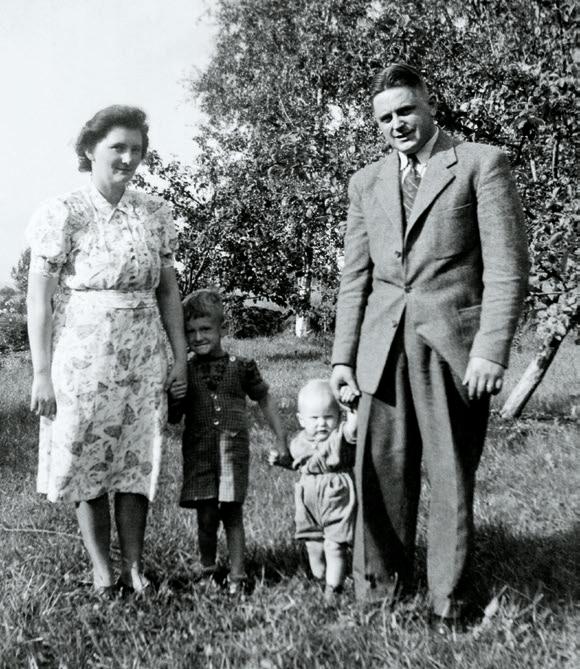
Since the company was founded in 1942, we’ve had a passion for sustainability and a vision that everything can be done a little better.
Using resources sparingly and creating long-term solutions are part of our DNA and the core of our business. We are constantly curious, and continue to develop sustainable and successful interior design solutions that enable both organisations and people to thrive. The Kinnarps AB Group currently comprises six production units, all located in Sweden, and has a brand portfolio of seven brands. The Group is a family-owned business, and the values that have been embedded in the company from the outset are still a major part of our heart and soul.
10 BRANDS
KINNARPS AB MATERIA AB NC NORDIC CARE AB MATERIA GROUP AB KINNARPS HOLDING AB SKANDIFORM AB 1777 +40 +250 11 THE KINNARPS AB GROUP COMPANY STRUCTURE Sales points Subsidiaries SEK 3.77 billion Employees Turnover 21/22 Head office Markets SALES COMPANIES We are
The purpose of the Kinnarps AB Group’s business model and value chain is to understand and fulfil the needs of businesses and organisations for interior design solutions with associated services.
DESIGN
01 02 03 04 05 06 12 DISTRIBUTION SALES RAW MATERIALS
MANUFACTURING USE AND REUSE
An invaluable value chain Value chain
01 DESIGN
When we design and develop products, we set high function and quality requirements. We work hard to take all factors affecting sustainability into account as early as possible in the development process, such as pure materials, as little waste as possible and an optimised use of resources. We design products with a platform approach that gives the product the flexibility to be renewed and changed over time.
02 RAW MATERIALS
When purchasing raw materials, components and finished products, it’s important to us that they come from sustainable sources and are produced under good social conditions. We therefore set high standards for both our suppliers and the products supplied. The Kinnarps AB Group has a common Code of Conduct covering social responsibility, which we also follow up through on-site risk assessments and audits at our suppliers' production facilities.
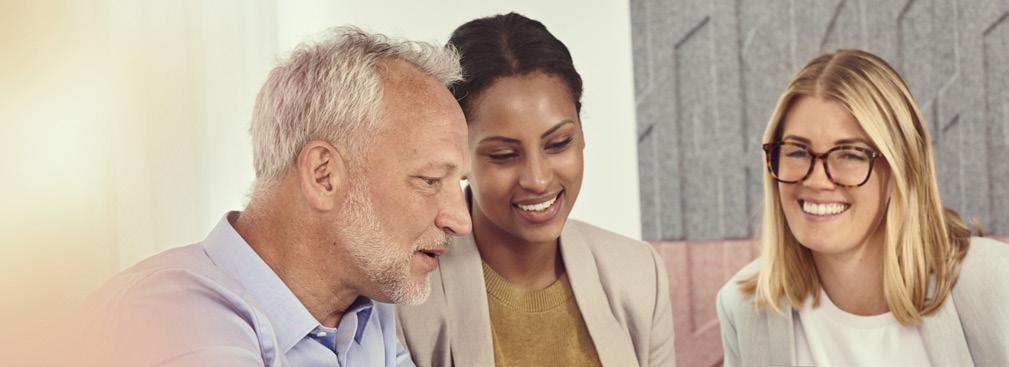
03 SALES
We help our customers to analyse both their existing and future needs, in order to create business adapted spaces that promote health and efficiency. A businessadapted interior design solution furnished with flexible and multifunctional products becomes a long-term investment that with small funds can change with changing needs.Making the right purchase from the start is an important part of reducing your environmental impact. We are a total interior solution provider and help our customers to implement their interior design solution with the help of products from the Group and our partners.
04 MANUFACTURING
We manufacture on the basis of customer orders, which means that we only manufacture what is actually in demand and avoid creating large stocks of products. When we manufacture our products, it’s important for us to avoid eco-hazardous and harmful substances. We do this not only to ensure a good working environment in our six manufacturing units, but also to create healthy working environments at our customers’ premises. We work continuously to improve our use of resources by optimising the consumption of materials, reducing waste and utilising leftover materials.
05 DISTRIBUTION
We have our own logistics system that delivers products from our Kinnarps, Drabert, MartinStoll, Materia and Skandiform brands. When we pack our products, we use blankets and cardboard sheets that we take away with us for reuse. This means that we save packaging and can significantly increase the loading capacity in our trucks. Our trucks also run on renewable diesel to further reduce our climate impact.
06 USE AND REUSE
It’s important to us to design products that last a long time. This is why we place great emphasis on high quality, and the ability to update or refurbish in order to further prolong the life cycle of a product, for example with machine washable upholstery or new parts. Being able to use something again and again over a long period of time is a vital component of reducing its environmental impact. When a product's life cycle comes to an end, it’s also important to be able to separate the materials for recycling and a potential new life. This is an aspect we include during our design work and product development.
13
Sustainability all the way
At Kinnarps, we look at sustainability from a holistic perspective. This involves using resources in an efficient and environmentally smart way, promoting well-being, and helping our customers to do the same. It’s about offering products that can be updated and reused, as well as delivering sustainably and creating well-thought-out and flexible interior design solutions that have been made to last. Most importantly, it’s about interior design that is always based on the actual needs of the people using it. Furniture and solutions that contribute to well-being and success – today and tomorrow.

14
At Kinnarps, we look at sustainability from the perspectives of sustainable spaces, sustainable people and sustainable investment. It’s when these three work together that you achieve genuine sustainability.
Designing sustainable, high-quality furniture with pure materials is a matter of hygiene for us. But in order for a piece of furniture to be truly sustainable, it must be part of an interior design solution that has been designed according to the vision and needs of a specific business. It is about spending time and thought at the beginning of the project, analysing the needs of the business and then designing interior design solutions that support their users and activities. Spaces with the right functions that support well-being, efficiency and creativity create sustainable people, which in turn leads to success for the business as a whole.
A sustainable investment is just as much about the present as the future, so it’s important to invest in
an interior design solution with a low life cycle cost, i.e. a flexible, multifunctional and transformable solution that can be adapted to changing conditions and needs. At Kinnarps, we’re experts at creating precisely this type of business adapted interior design solution for our customers, and our products are also designed and prepared to be able to be updated, reused and recycled.
For us, sustainability is simply a lifelong commitment, based on curiosity, a long-term approach, and an indefatigable desire to do it differently and do the right thing, and to pave the way for a better tomorrow.
15
Mapped needs show the way
The greatest sustainability impact is achieved by choosing the right interior design solution from the start. To be able to do this, it’s important to map out and analyse your needs, and create a business adapted and flexible solution that lasts over time.
Results & recommendations
Needs mapping & involvement
INTERIOR DESIGN SOLUTION ANALYSIS
Translation of results Vision & goals
Layout Designconcept
Over the years, we’ve helped many customers to design value-creating transformations in their physical space. We do this through our needs analyses Next Office ®, Next Education® and Next Care ®, which help to create business adapted and sustainable spaces. Thanks to our many years’ experience of workplace strategy, we know that solid preparatory work creates success. The key is to map the customer’s unique needs and work patterns. This creates the conditions for achieving the best and most sustainable solution.
Our needs analyses help the customer to gather valuable knowledge and data before designing their spaces. With specially developed tools,
our experienced workplace strategists guide the management team to establish the vision, goals and framework for the project. Through workshops, lectures and an online survey, they then help to map needs and work patterns and involve all stakeholders in a carefully considered way. The analysis provides the customer with facts, a solid knowledge base and a qualitative basis for how their workplace can be designed to best meet their needs.
Well-considered, well-planned working environments that meet the needs of both the organisation and employees promote everything from well-being and creativity to efficiency and productivity.
16
Deliver
This leads to an efficient use of the available space, a reduced risk of accidents and sick leave, and a stronger brand, which facilitates both the recruitment and retention of staff. In other words, a good and sustainable investment.

NEXT OFFICE ® NEXT EDUCATION ® NEXT CARE ® 17
Handover & review Playbook Development & circular services Adjustments Analysis of results Layout FOLLOW UP IMPLEMENTATION Delivery
People and spaces that last over time
WELL-BEING BEGINS IN THE SPINE
In our product development, we collaborate with ergonomists who are experts on our physical and psychological needs. This enables us to create customisable products that enhance people's wellbeing, and minimise sick leave and work injuries. One example of this is the Capella office chair, developed with a completely unique seat that provides wellbalanced micro-movements and promotes active sitting. Another good example is the Rocca stool, with a playful design that encourages movement, as a means of increasing well-being and improving energy levels.
REUSE AGAIN AND AGAIN
We base the design of our products on circularity, as we believe it should be easy to upgrade and replace parts to prolong the lifespan of the furniture. Everything is done to enable our customers to renew their interior design and create attractive working environments, without great inconvenience or environmental impact. For example, we offer 29 product ranges with removable upholstery, which makes it easy to reupholster these products in a costeffective way, without unnecessary transportation.
PRODUCTS THAT CAN TAKE HARD KNOCKS
Our products are tested for compliance with strict quality requirements in our own accredited Test & Verification Centre, to guarantee high quality and product safety. Kinnarps' height-adjustable desks, for example, are tested three times more than the industry standard (15,000 cycles instead of 5,000 cycles) to guarantee their longevity. This means that our customers receive products that last longer, which also reduces their investment costs over time and significantly reduces their climate footprint.
ENVIRONMENTALLY FRIENDLY AND FAIR
All our factories are located in Sweden, and have high environmental and working environment requirements.
We also demand social responsibility within our supplier chain, via our Supplier Code of Conduct, which mandates an on-site risk assessment and monitoring to ensure socially acceptable conditions.
In our production, we also deal with waste materials in various climate-smart ways. For example, some of our factories are heated using wood waste from their own production. In addition, we’ve developed the innovative Re:fill material, which consists of leftover fabric from our production in Skillingaryd and recycled PET bottles.
We have stringent environmental requirements for all our products and many of our products are also ecolabelled. This means that the products are safe and contain no unnecessary or harmful chemicals, which creates healthy working environments and better indoor quality.
BLANKETS THAT MAKE A DIFFERENCE
We use blankets as packaging material instead of single-use boxes for the delivery of products from Kinnarps, Drabert, Materia and Skandiform. The blankets are then taken back for reuse on the next delivery, saving waste management and about 270 kilos of packaging per truck shipment. The blankets also mean that we can fit 50% more furniture in our trucks, compared to other companies in the industry. This is just as positive for the climate as it is appreciated by our customers, as it means fewer and faster deliveries.
THE BETTER EFFECT INDEX
The Better Effect Index is the Kinnarps Group's own sustainability index and the market's first comprehensive tool for sustainable interior design choices. The Better Effect Index is based on our customers' wishes concerning sustainability. In the index we grade our products in six specific sustainability areas: Raw materials and resources, Climate, Pure materials, Social responsibility, Reuse and Ergonomics. Together, these give a comprehensive picture of the product's sustainability.
The Better Effect Index is available on our website as an “Open Source”, which allows everyone to compare their products with ours. The index is designed as an online tool and is continuously updated with new products. It currently includes about 250 products from Kinnarps, Drabert, Materia, Skandiform and NC.
18
All products are graded in six different areas. Each area consists of a number of indicators that the product must fulfil. The highest grade in each area is 3 points. Read more about The Better Effect Index, the six areas and the various indicators for grading at kinnarps.com


2,41 19 Number of ecolabelled products
2.7 1.8 3.0 3.0 1.7 2.3 RAW MATERIALS & RESOURCES CLIMATE PURE MATERIALS SOCIAL RESPONSIBILITY REUSE ERGONOMICS 252 MÖBELFAKTA CERTIFICATES 146 RANGES WITH FSC ® -LABELLED PRODUCTS 17 NF ENVIRONNEMENT 17 NF OFFICE EXCELLENCE CERTIFÉ 17 GEPRÜFTE SICHERHEIT 8 EPD
Our sustainability strategy and long-term sustainability goals

Kinnarps' sustainability strategy is based on our overall vision and business plan, which involves creating inspiring and effective interior design solutions – to contribute to prosperity and well-being.
We have evaluated our activities against the UN's 17 Global Goals and identified the ones that we have the greatest opportunity – directly or indirectly – to influence. And then linked them to our most prioritised areas.
FOCUS AREAS
ERGONOMICS
20
RAW
PURE
MATERIALS AND RESOURCES CLIMATE
MATERIALS SOCIAL RESPONSIBILITY REUSE
2030 GOALS
Our goal is for all raw materials in our products to be traceable and from responsible sources. All wood raw material should be FSC ® certified or recycled. Materials should be used in an even more resource-efficient manner.

Our aim is to become climate neutral. We work continuously to improve energy efficiency in all our operations and to use more energy from fossil-free sources.

Our goal is to create healthier working environments, with fewer chemicals, and free from materials classified as harmful to health or the environment.
Our goal is to have verified good working conditions throughout our value chain, contributing positively to the social development on the sites where we and our partners operate.

Our goal is for all our products to be designed for a long lifespan, and for our interior design solutions to be part of a circular flow that prolongs the life of products and materials. We use more recycled materials in our products and find innovative ways of using the leftover material from our operations.
Our goal is to create working environments that promote the health and well-being of everyone who spends time there. Holistic ergonomics is central to our interior solutions, and our products are inclusive and individually adaptable.
GLOBAL GOALS









21
Our focus areas
More and more people want to make sustainable choices, so we must make it easier for them to choose. For this reason, we also clarify our sustainability work via six crucial areas, which also give us a holistic view of the sustainability impact of our products. This affects everything from global waste mountains and the state of our forests to the working conditions of the people employed in the various stages of production.
Raw materials and resources
Materiality analysis
Pure materials
Circularity
Climate Social responsibility Ergonomics
A B C D F E G H I J L M K N O 22 IMPORTANCE FOR STAKEHOLDERS IMPORTANCE FOR KINNARPS' BUSINESS STRATEGY
STAKEHOLDER DIALOGUE
Which issues are important to the people who influence or are influenced by our operations? Knowing this is essential to enable us to pursue our sustainability work effectively, and we therefore maintain a regular dialogue with our stakeholders. This is done by methods including interviews, focus groups, surveys, and ongoing meetings in our daily operations.
THE KEY STAKEHOLDERS
WE HAVE
IDENTIFIED Customers / Regulators / Owners / Employees / Suppliers / Authorities / Lenders / Society / Retailers / Insurers
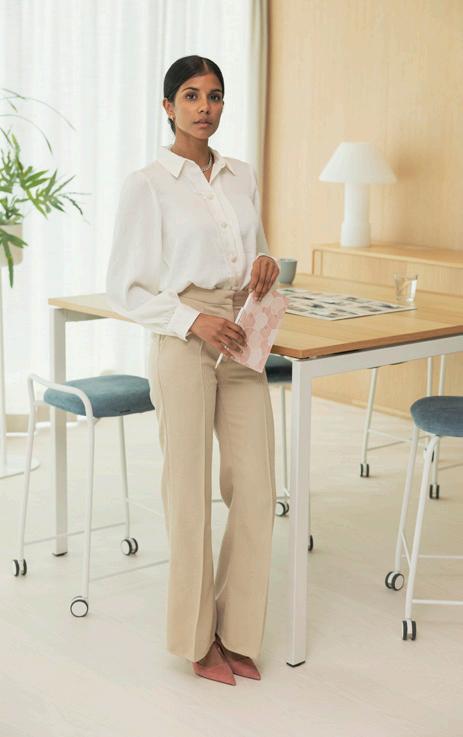
MATERIALITY ANALYSIS
Which sustainability issues are most relevant for our operations? On the basis of the stakeholder dialogue, we carry out a materiality analysis, which is revised annually. The analysis not only identifies the areas in which Kinnarps' stakeholders have the highest expectations, but also those of major importance to our business strategy. These are also the areas we prioritise in our sustainability work and report on.
23
B
C
D
E
F
G
H
I
J
K
L
M
N
A Product and service quality
Pure materials and chemicals
Social responsibility
Transportation and resource efficiency
Product labelling
Circularity
Climate
Waste and emissions
Transparency
Ergonomics and health
Responsible wood raw materials
Working environment
Long-term and responsible business
Skills and development opportunities O Local involvement
Raw materials and resources
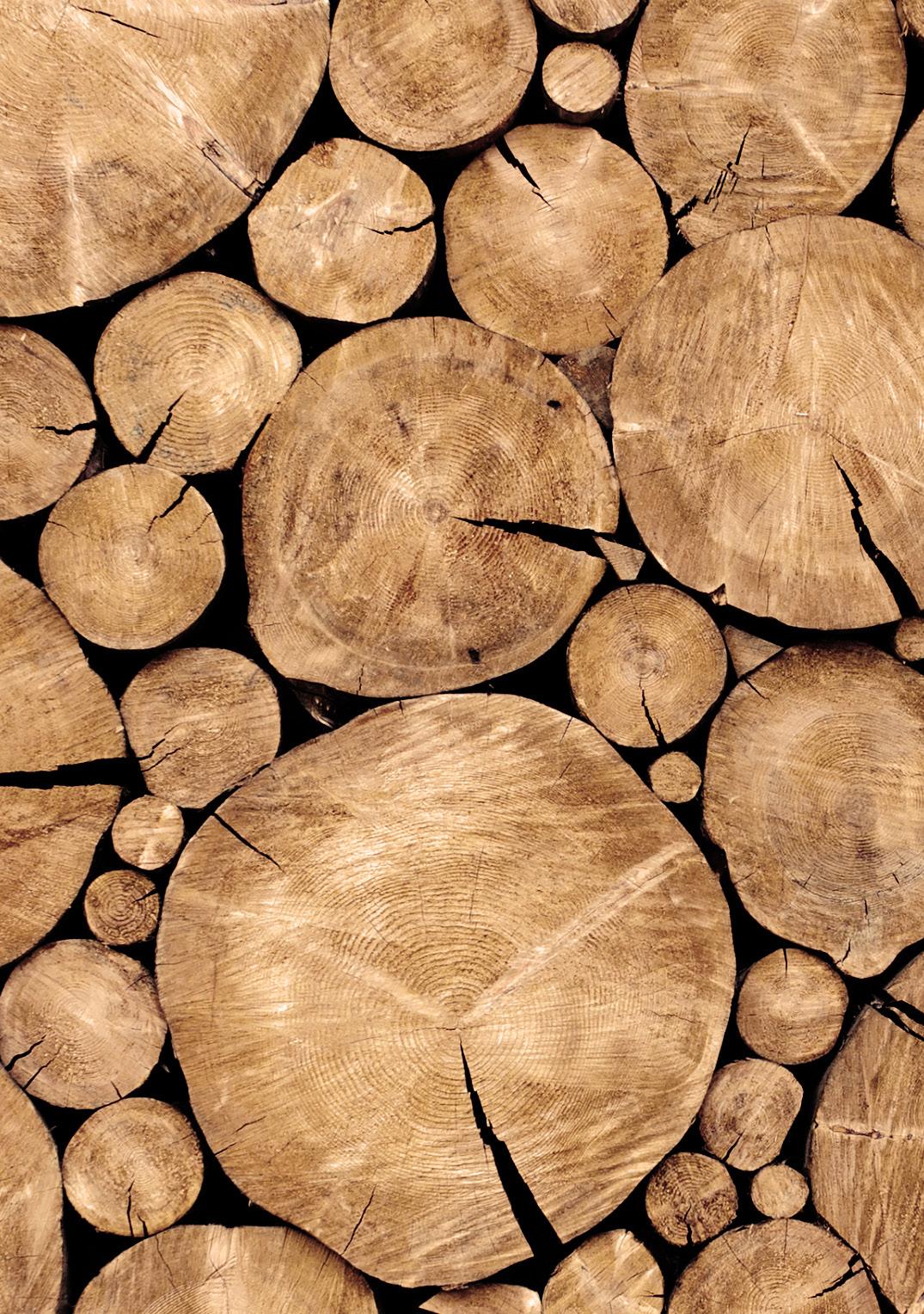
Conserving natural resources is crucial. It’s also an important part of Kinnarps' identity and a prerequisite for all sustainable operations.
In other words, we take responsibility all the way from choosing the right raw materials to finding the right manufacturing procedure – for the sake of our planet.
24
definition
Which materials we use in our products, and how they’re manufactured, has a huge significance for our environmental impact. It’s also important that we use these materials efficiently and minimise waste, in order to reduce the consumption of natural resources.
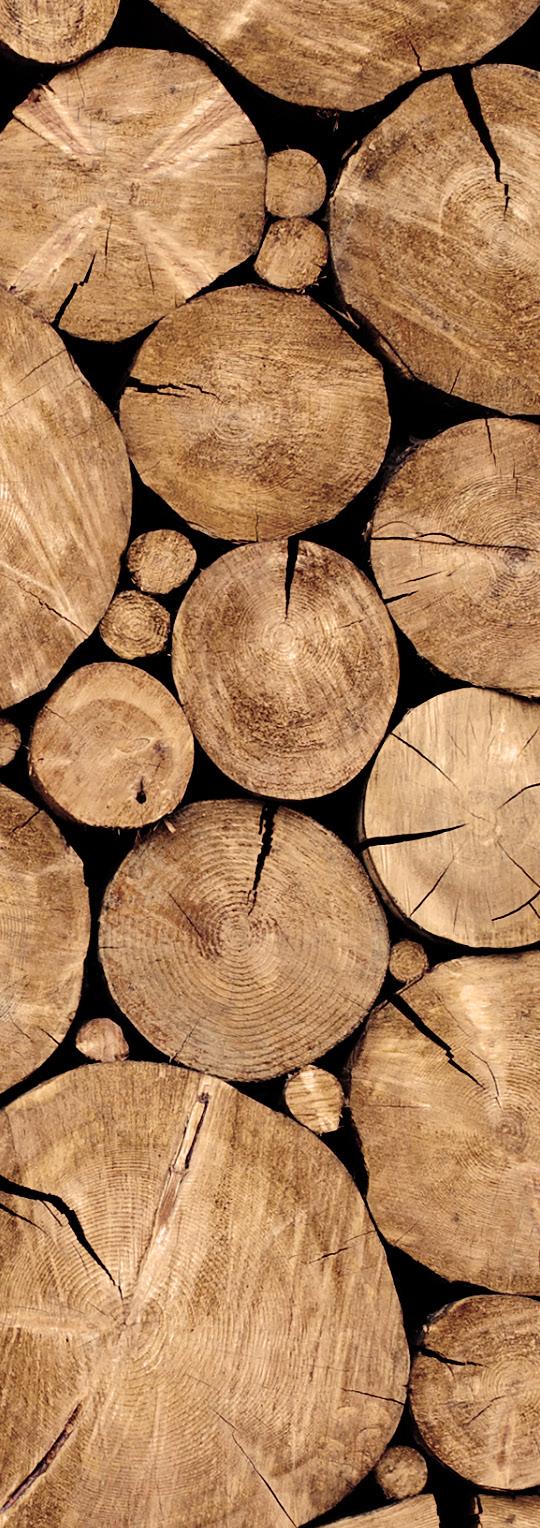
These materials are used in our production
The diagram shows the proportion of material procured on the basis of its procurement value.
METAL
PLASTIC
TEXTILES
CHEMICAL PRODUCTS
25
ELECTRONICS 56% 19% 7% 13% 3% 2% FOCUS AREA: Raw materials and resources
WOOD
challenge
Long and complex supply chains
The extraction of raw materials and the manufacturing of materials are part of a complex global context. For us as an individual player, it’s a huge challenge to trace the origin of raw materials such as oil, plastic, ore and metal, and check on the conditions in which they were produced. It’s much easier for us to influence our direct suppliers. Longer supply chains are more complicated to map, as we don’t have the financial relationship with the suppliers, which also means that we have less ability to influence them. For the same reason, it’s challenging for us to influence the efficiency
of material use in the supplier chain. Wood is unique in that there are good traceability certifications and this is why we’ve set higher targets in this particular area. But the availability of certified wood is limited at the best of times and has declined even further as a result of the war in Ukraine. Nor is it enough for the wood to have traceability certification – it also needs to meet our high quality requirements.
strategy
Material requirements and resource efficiency
material requirements We stipulate that all our suppliers sign up to accept and comply with the requirements specified in our Code of Conduct in relation to social conditions and environmental considerations during production. We insist that all articles purchased must meet material requirements based on the criteria in the applicable ecolabels. We also obtain information about the country of manufacture and have procedures for checking the origin of all wood raw material. We do not accept wood from forests with high conservation values, areas which have been converted from natural forest into plantations, or forests where there are ongoing social conflicts. Our units in Kinnarp, Skillingaryd, Tranås and Vinslöv all have FSC® Chain of Custody traceability certification. FSC® labelling is a guarantee that the raw material comes from environmentally adapted, socially responsible and financially viable forestry. We’re involved in the development of new materials, including through the research project Skogens Tyg (Fabric Forest), where a fabric made of paper yarn has been
developed and tested on prototypes. resource efficiency We are constantly working to streamline our production processes and material utilisation in order to reduce waste. We’ve made major investments in the Skillingaryd factory, in order to increase the utilisation rate of textiles with more precise cutting. Of the waste that still arises, we sort out polyester fabrics that, together with recycled PET bottles, are used for the sound-absorbing material Re:fill in new products. We’re participating in the TexChain3 project in order to develop methods for using textile waste in more products. In addition to this, we’ve invested in an efficient level laser for our factory in Jönköping, which reduces sheet metal waste by 15 percentage points. Alongside our production of plastic components in Skillingaryd, we’re now investing in a mill that will allow us to reuse our production waste. In our production in Kinnarp, we’ve started sending leftover ABS strips to a recycling company, which will now become raw material for the plastics industry.
26
The materials we use most
wood We only use certified wood or wood the origin of which we’ve checked with regard to tree species and source country. Our assortment includes more than 140 different ranges with FSC ®–labelled products. The resource use of veneer is optimised by planking the material.
textiles We offer durable natural materials, such as wool from Norway and New Zealand, but we also work with synthetic materials, including Xtreme made of recycled polyester. 84% of the fabrics in our assortment have OEKO-TEX® or EU Ecolabel certification, which means that they’ve been made with consideration for the environment and health. For fabric cutting, we use an automated program that optimises usage and reduces our waste.
metal We use recycled metal as much as possible with regard to availability and quality requirements – such as cast aluminium and recycled magnesium. Chrome-plated details are produced using trivalent chrome, which has better environmental and health properties than hexavalent chrome.
plastic We have our own moulding facility for padding at our factory in Skillingaryd. This gives us complete control over the material, and we can use the isocyanate MDI instead of the prevalent and health-hazardous TDI. We also manufacture plastic components in Skillingaryd, where many details are made from recycled plastic. The plastic granulate that we purchase mainly comes from Europe.
electronics We do not allow “conflict minerals” in our electronics. We want to ensure that we do not use electronics that contain tin, tantalum, tungsten or gold that has been mined illegally, or the mining of which contributes to supporting conflicts.
chemical products We use chemical products such as glues and lacquers in our production, and we check that they meet the requirements of the relevant ecolabels. The chemical products we use are produced in Europe.

27
FOCUS AREA: Raw materials and resources
Our factory in Skillingaryd
2030 long-term goal
Our goal is for all raw materials in our products to be traceable and from responsible sources. All raw wood materials should be FSC® certified or recycled, and all materials should be used in an even more resource-efficient way. This goal is linked to the UN's Sustainable Development Goals 9 and 15, 'sustainable industry, innovations and infrastructure' and 'ecosystems and biodiversity'.
Proportion of certified wood raw material in total wood raw material procured*
analysis The proportion of wood that is FSC or PEFC certified has increased by one percentage point to 96%. A smaller proportion of the material is FSC Controlled Wood, which means that it has been inspected. As a result of the war in Ukraine, timber from Russia and Belarus may not be certified with either FSC or PEFC, which has reduced access to certified wood globally. Nevertheless, we have managed to secure access to materials and increase the amount of FSC-certified material to an impressive 76%.
We are four percentage points from achieving our target of 100% and the final percentages have proved difficult – but not impossible – to achieve. This relates to smaller volumes where availability is limited or some operator in the supply chain lacks traceability certification. So in order to achieve our target, we’re encouraging our suppliers to become traceability certified.
Goal
2019 2020 2021 FSC
FSC
2022 28
CW
PEFC
2025
All wood raw materials should come from certified or third-party audited sources. * Procurement of wood raw material for our own products manufactured in Kinnarp, Skillingaryd, Tranås and Vinslöv. 2025 GOALS
o BJ ecti V e
20% 76% 23% 24% 72% 72% 68% 28%
analysis The utilisation rate of textiles reached the same level as last year at 83%. We frequently measure the utilisation rate in order to identify potential for improvement. Our investments in recent years in new equipment, in the form of both hardware and software, have ensured very high precision in our fabric cutting. In addition to the precision of the machines, there are two main factors that affect the utilisation rate: which patterns the fabric is to be cut out in and what the day's mix looks like. In other words, how many equivalent products are to be manufactured in accordance with our customer order-controlled system. In the coming year, we’ll be working to upgrade technology and machines in order to further increase efficiency. Leftover waste fabric is reused in our Re:fill padding material or sent for recycling.
2025 Goal
The utilisation rate of fabric should be 85%.
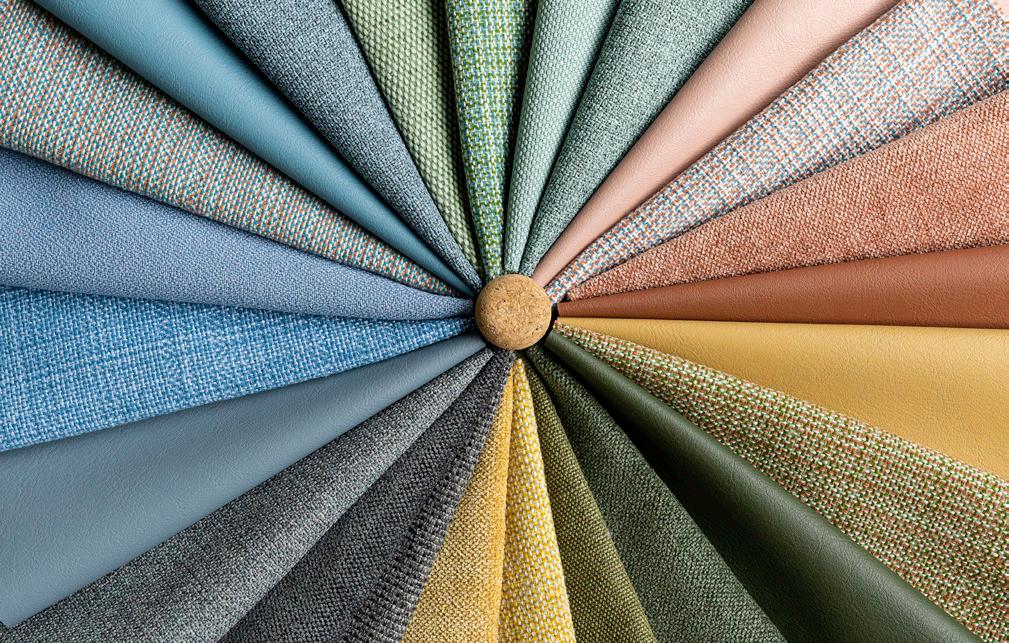
29
FOCUS AREA: Raw materials and resources * Production in Skillingaryd 84% 2019 82% 2020 83% 2021 83% 2022
Textile resource utilisation*
Climate
Fossil fuels are the largest source of carbon dioxide emissions. This is why we are particularly proud of our logistics system, which is partly powered by renewable diesel, but is also packed in a more climate-smart way – with blankets that are reused, resulting in less transportation and less waste management. In addition to this, we are also working to become more efficient in everything from material extraction to energy use.
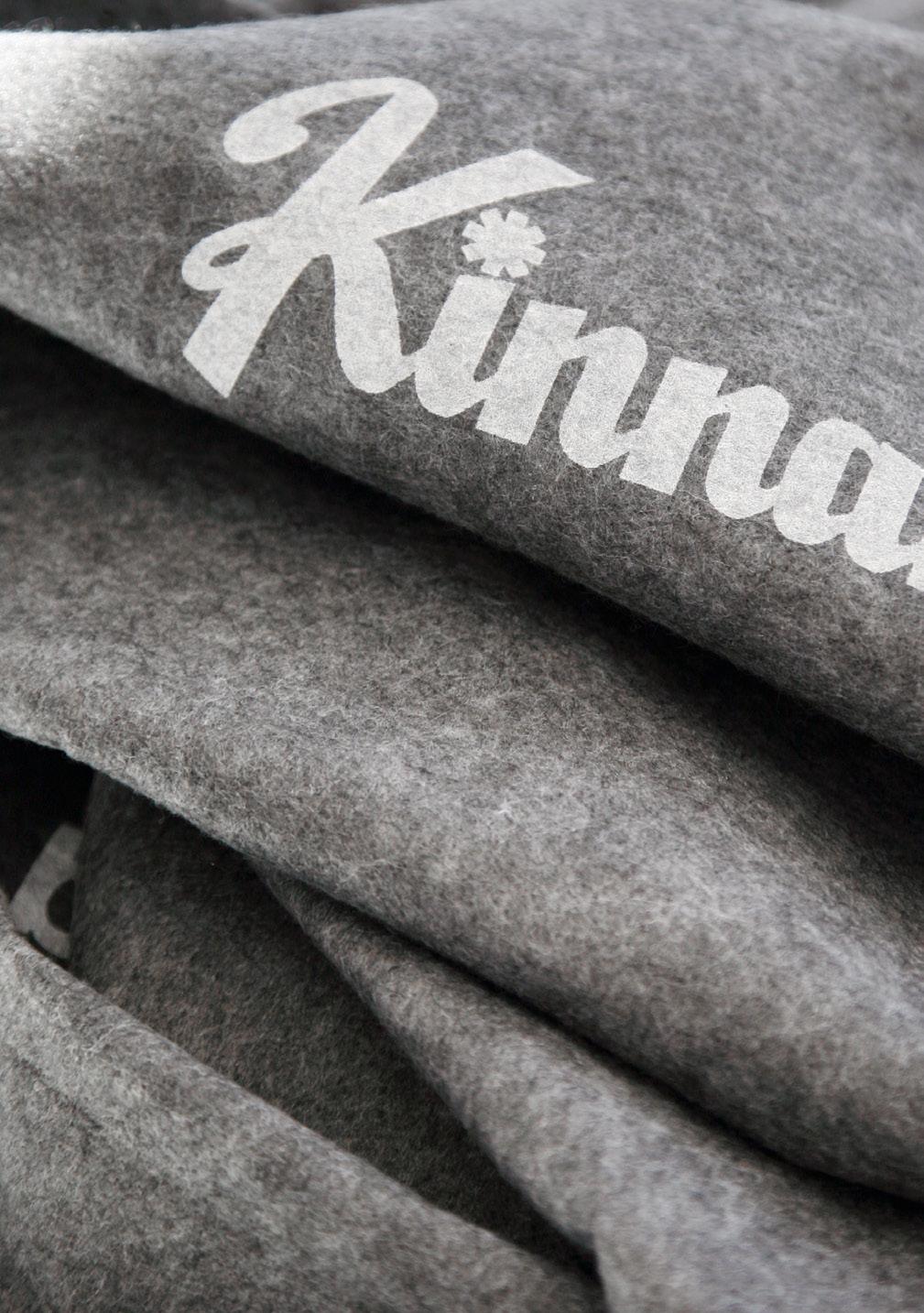
30
The global climate goal means that global warming should be limited to less than 2 degrees, and preferably stop at 1.5 degrees. Achieving this climate goal requires concerted efforts from all sections of society. In our case, climate impact arises primarily during the extraction of raw materials, production and transportation.
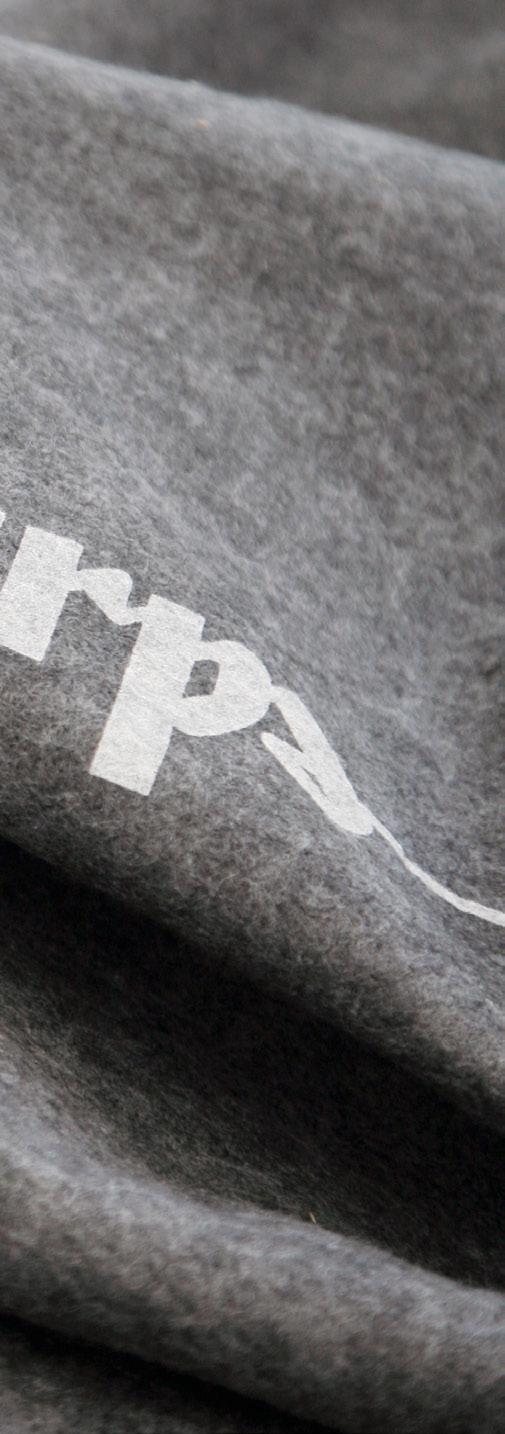
31 UNIT, TONNE CO 2 E SCOPE 1 – DIRECT EMISSIONS Oil 206 LPG 289 Gas 298 Our own freight transportation 2612 Passenger transportation 884 SCOPE 2 – INDIRECT EMISSIONS Electricity 460 District heating 358 SCOPE 3 – OTHER INDIRECT EMISSIONS Procured freight transportation 358 Business trips in private cars 61 TOTAL 5527
GROUP'S CLIMATEIMPACTING EMISSIONS, USING THE GREENHOUSE GAS PROTOCOL
FOCUS AREA: Climate
THE
definition
Profitable climate investments
We have long worked on energy efficiency improvements in our operations, and have continuously identified and eliminated unnecessary consumption and energy leakage. But after many years of persistent work, most of the financially justifiable measures have been implemented. There are still some minor actions that have a limited impact or measures that require major investments. However, the increased price of electricity in recent times may justify larger energy efficiency investments going forward.
On the transport side, our efforts to use more fossilfree alternatives have been hindered by a limited supply of renewable substitutes, as well as a limited infrastructure and geographical availability for this type of fuel. We also see the need for longer-term political ground rules that help to make renewable fuelsmore competitive with fossil fuels. Furthermore, we see major challenges in relation to climate-enhancing measures in our supply chain, where our ability to influence is also significantly lower.

32
challenge
Climate-optimised transportation and energy auditing
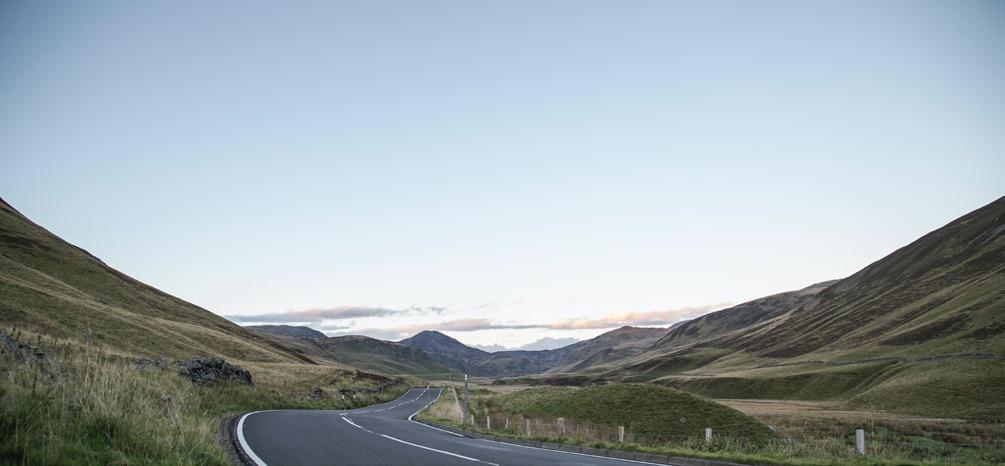
transportation We have our own logistics system that is unique in the industry. Instead of single-use boxes, we use blankets to protect the products in transit. The blankets are then taken back to be reused for subsequent deliveries. This saves us and our customers about 270kg of packaging per truck container. This method of packaging the products also makes it possible to find room for 50% more furniture per shipment. This is because we can pack the products like a jigsaw and avoid transporting unnecessary air. So when others require up to three trucks, we manage with two. This increases efficiency and reduces the number of shipments, and ultimately the climate impact.
Our own logistics system includes products from the Kinnarps, Drabert, MartinStoll and Skandiform brands, and starting this year products from Materia as well. This saves on transportation and makes life easier for our customers, as we can deliver a total solution in one delivery. After each delivery, we then fill the trucks with materials from our suppliers, which means that we use the transport capacity in both directions.
At our filling station in Kinnarp, we use HVO diesel with 97% renewable content, which means that our trucks run largely on renewable diesel.
In order to further streamline our logistics system, we are taking part in a research collaboration with Volvo concerning High Capacity Transport (HCT). This involves testing longer combination vehicles that drive with two trailers instead of one, meaning we can fit in a third transport container. This increases the load volume by 50% and also results in approximately 20% lower CO2 emissions. This has enabled us to
reduce shipments between our factories by one trip a day. Thanks to a positive government decision about HCT on Swedish roads, we see good prospects for expanding the concept in the coming years. Our vehicle fleet includes electric service vehicles and passenger cars, and we also have a gas-powered lorry in operation for the delivery of furniture, which reduces the climate impact by more than 50%.
We’re also certifying our truck containers for railways, which prepares us for more rail freight in the future.
production and premises Our energy consumption is greatest at our Swedish production facilities in Kinnarp, Jönköping and Skillingaryd. We’ve therefore carried out energy audits to identify the potential for energy efficiency measures. We’re aiming to use more energy from renewable sources or energy sources with a lower climate impact. We’ve swapped most of the LPG used in production at our factory in Jönköping for district heating, which has a considerably lower climate impact. This saves approx. 500 tonnes of CO2 per year. During the year, we’ve also replaced our solid fuel boiler and reserve oil boiler in Skillingaryd with district heating. At our production unit in Kinnarp, we also recycle wood waste for briquettes that heat the factory with fully renewable energy. At our facility in Skillingaryd, we’ve also installed a production line for manufacturing plastic components, which means that we’re insourcing production and thus reducing transportation in the production chain. Hot water is used as a heat source, which in turn consumes less energy than traditional electrical coils.
33 strategy
FOCUS AREA: Climate
o BJ ecti V e
2030 long-term goal
Our aim is to become climate neutral. We’re also working continuously to improve energy efficiency in all our operations and to use more energy from fossil-free sources. This goal is linked to the UN's Sustainable Development Goals 7 'sustainable energy for all' and 13 'combating climate change'.
PROPORTION OF FOSSIL-FREE ENERGY
analysis We’re achieving our goal, as the proportion of fossil-free energy in our operations has been 76% during this financial year. The proportion of fossil-free electricity has increased compared to the previous year, while due to renovations of our solid fuel boiler in Kinnarp we’ve needed to use a larger volume of oil than in a normal year. Our blue trucks fill up with renewable diesel at our filling station in Kinnarp, but a global shortage of HVO100 has necessitated a switch to HVO diesel with 97% renewable content instead of 100%.
In the Skillingaryd factory, we’ve switched from heating with briquettes to district heating, which means a slightly lower proportion of fossil-free energy.
2025 Goal
The proportion of fossil-free energy should be at least 75%.

76%
34
EMISSIONS OF CARBON DIOXIDE EQUIVALENTS FROM GOODS TRANSPORTS (G/TONNE KM)*
analysis At our filling station in Kinnarp, we use renewable diesel, but a global shortage of HVO100 has necessitated a switch to HVO diesel with 97% renewable content instead of 100%. Compared to the previous year, carbon dioxide emissions per tonne-kilometre have increased, primarily because the reduction in this fuel was lower than in the previous year. On the other hand, we’ve succeeded in reducing total fuel consumption per tonne kilometre. Thanks to the introduction of driver support that measures driving behaviour in our trucks, we’ve reduced average fuel consumption by 7.4% compared to the previous year. During the year, we began delivering Materia products in our blue trucks directly to the customer, which means that external transportation has been replaced by internal transportation and we’re transporting larger volumes with our blue trucks. We’ve continued to operate two HCT rigs, which reduces the number of journeys and we see good prospects for the expansion of HCT transport in the coming years.
*Transport with Kinnarps’ blue trucks
2025 Goal
Reduce CO2 emissions per tonne km from blue trucks by 70%.
EMISSIONS OF CARBON DIOXIDE EQUIVALENTS (TONNES/MSEK)*
analysis We’ve succeeded in reducing CO2 emissions by as much as 35% compared to the base year, which means that we’ve achieved our goal. During the year, we’ve implemented energy efficiency improvements in lighting and ventilation in our premises, as well as compressed air and heat recovery from processes in our factories. Among other things, we’ve invested in a new edge processing machine equipped with lasers that help it to use less energy. Our blue trucks mainly run on HVO diesel with 97% renewable content, and by introducing driver support that measures driving behaviour in our trucks we’ve been able to reduce average fuel consumption. By switching to a greater proportion of fossil-free electricity in several parts of our business, emissions related to electricity use have been reduced significantly.
* Production in Kinnarp, Jönköping, Skillingaryd, Tranås, Vinslöv and sales subsidiaries.
2025 Goal
Reduce CO2 emissions per SEK turnover by 30%.
40 35
25 20 15 10 5
2019
35 FOCUS AREA: Climate
30
0
2020 2021 2022 2,50 2,00 1,50 1,00 0,50 0,00 2019 2020 2021 2022
Pure materials
Since our furniture is used in spaces where children and adults spend much of their lives, it’s particularly important that our products don’t contain harmful substances that adversely affect their health and well-being.

36
definition
Furniture may contain substances that have a negative effect on the environment and public health. These substances may be present in the raw material from the start, or may be added during the manufacturing process. The substances may have an effect either via direct contact or via dispersal in the air.
IN THE FURNITURE INDUSTRY, THE FOLLOWING CHEMICALS MAY BE PRESENT IN DIFFERENT MATERIALS
wood Formaldehyde. Surface treatments may contain aromatic solvents, VOCs, CMRs, SVHCs and allergenic substances.
textiles Flame retardants, phthalates and plasticisers, formaldehyde, dirt- and grease-repellentsubstances, toxic dyes, heavy metals and SVHCs.
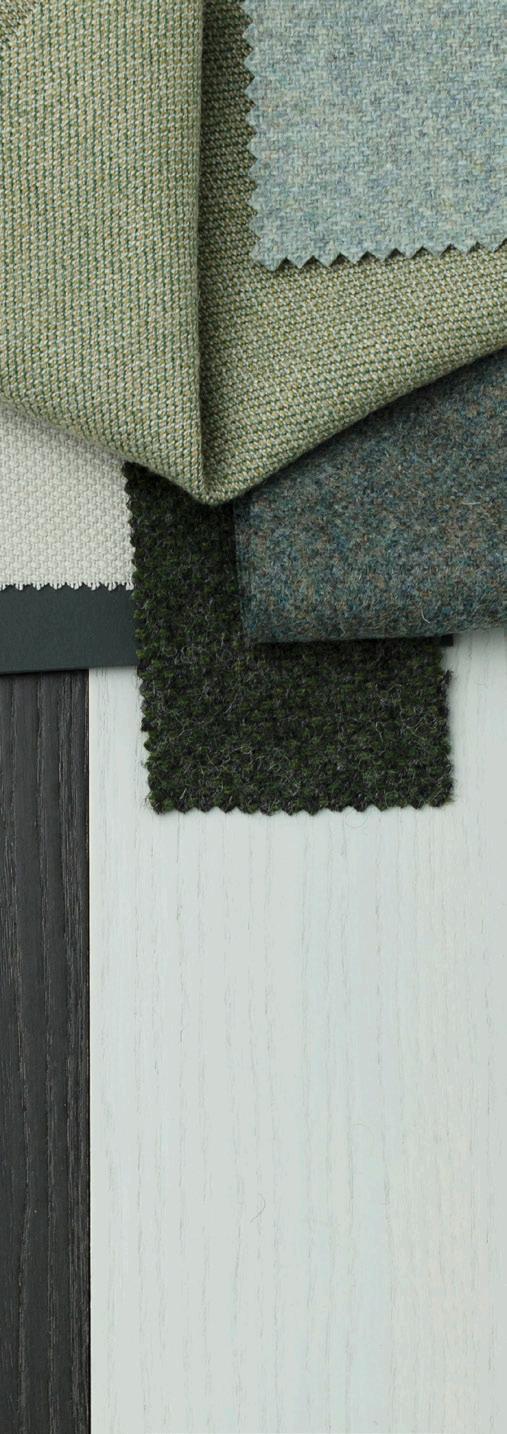
electronics Flame retardants. PVC.
plastic and padding Flame retardants, phthalates and plasticisers, PVC, heavy metals, chlorinated paraffins and SVHCs.
metal Surface treatment containing chromium 6, aromatic solvents, VOCs, CMRs, SVHCs and allergenic substances.
37
FOCUS AREA: Pure materials
Developing surface treatments that meet both environmental and quality requirements
Chemicals are used in lacquer, glue and paint to create surfaces that withstand liquids and detergents. These properties are essential in spaces where frequent cleaning and disinfection take place, such as hospitals, schools and restaurants.

But this type of resistant surface treatment does not always meet the requirements of the leading ecolabel
systems, and more eco-friendly lacquers are often less suitable for use in demanding environments. Our greatest challenge is therefore to develop surface treatments that meet strict environmental and quality requirements.
38
challenge
Stricter requirements through product labelling
In order to ensure that our products do not contain unnecessary chemicals, we set requirements for all materials and components included. The requirements are based on the labels included in our ecolabelling policy: EU Ecolabel, Möbelfakta, GS, NF Environnement, NF Office Excellence Certifié and FSC®, and cover all substances mentioned in the definition in the previous section. We’ve also carried out emission measurements for certain products as per the requirements in M1 and ANSI/BIFMA. These measurements show good results, with very low emissions. We have developed and improved our staining method for improved disinfection resistance. Stained tables and storage units can be wiped clean with disinfectants and then water without damaging the surface, which means that the products meet strict quality requirements and last longer.
chemical products The chemical products we use in our manufacturing are lacquer, glue, oil and detergents. Their use is monitored by means of a chemical management system at all our production units. This includes safety data sheets and updates in accordance with the REACH candidate list. We work continuously with the substitution of chemical products and substances, and conduct risk assessments within the framework of our systematic HSE management.
plastic and padding Parts of the padding we use are moulded in-house and we’ve eliminated the hazardous isocyanate TDI. The foam is also free from flame retardants. The padding that we don’t mould in-house is labelled with OEKO-TEX, which guarantees that the material meets stringent environmental and public health requirements. We stipulate that all plastics used in the Group's furniture should be free from Bisphenol A and phthalates.
wood Glue containing formaldehyde is used in the manufacturing of chipboard. All our chipboard meets the requirements of Carb Phase II and has low emissions corresponding to half of the European E1
standard, which means a very low emission of formaldehyde. For surface treatments, we primarily use water-based lacquers with zero or low solvent content. At our factory in Kinnarp, tables and storage units are surface-treated with UV lacquer, which ensures very low VOC emissions.
metal Hexavalent chromium is allergenic and carcinogenic, which is why we only use trivalent chromium. Powder lacquer is used for the surface treatment of metal, as it is VOC-free and also complies with ecolabelling requirements.
textiles The fabrics in the Kinnarps Colour Studio range are free from flame retardants and toxic dyes. Instead, we use wool, which is naturally flame-retardant, or polyester fabrics with a flame-retardant fibre construction. 84% of our fabrics have either EU Ecolabel or OEKO-TEX certification. Our leather is vegetabletanned without heavy metals.
electronics Electronics may contain metals and chemicals that can cause environmental and public health problems. We stipulate that our suppliers must always comply with the RoHs directive, which restricts or prohibits the use of certain heavy metals and flame retardants in electronics. Lead, mercury, cadmium and hexavalent chrome, as well as the flame retardants PDD and PBDE, are prohibited.
39
FOCUS AREA: Pure materials
strategy
o BJ ecti V e
2030 long-term goal
USE OF SOLVENTS
(VOC, TONNE) THE KPI REFERS TO OUR IN-HOUSE PRODUCTION IN KINNARP

analysis Our focus is on keeping the amount of VOCs in the lacquers used on our products as low as possible. During the year, we’ve managed to further reduce the amount of VOCs per lacquered surface and the result is 9g/m2 lacquered surface, which is well below our target of not exceeding 12g. During the year, we invested in a new edge processing machine where we use a water-based release and cleaning agent with wax instead of VOCs. This means a reduction in our solvent use of 1m³ per year. We’re continually working to find alternatives with fewer VOCs. The total amount
of surface that is lacquered has been reduced by e.g. reducing the size of tables and increasing the proportion of laminate. Over the past 5 years, we’ve reduced our total solvent use by over 60%. At our facility in Kinnarp, we use UV lacquer on smooth, veneered surfaces, which gives a resistant finish and very low quantities of VOCs. At our Jönköping facility, we lacquer metal surfaces with VOC-free powder lacquer.
11,7 10,0 9,2
2025 Goal
2020
2021
14,0 12,0 10,0 8,0 6,0 4,0 2,0 0,0 40
2022
Our goal is for our solvent use to be less than 12g/m2 of lacquered surface.
Our goal is to create working environments with fewer chemicals and free from any materials classified as harmful to public health or the environment. This goal is linked to the UN's Sustainable Development Goal no. 12 'Responsible consumption and production'.
MATERIALS GUIDE
ECOLABELLED PRODUCTS
Möbelfakta, the EU Ecolabel and NF Environnement set high environmental standards for product content.
ECOLABELLED FABRICS
EU Ecolabel and OEKO-TEX guarantee that the fabrics are free from harmful chemicals.

POWDER LACQUER OR WATER-BASED LACQUER
Powder lacquer and water-based lacquer give zero or very low emissions of VOCs. High concentrations of these volatile organic compounds in the air pose both public health and environmental risks.
WOOD-BASED PANELS ACCORDING TO STANDARD CARB P2 OR HALF E1 Particle boards, MDF, Plywood, etc. that meet these requirements have very low emissions of formaldehyde.
CHROMIUM III INSTEAD OF CHROMIUM VI
Chrome is hardwearing, but choose chromium III, which is a better option for the environment and health.
PRODUCTS WITHOUT FLAME RETARDANTS
Flame retardants accumulate in the body and may act as hormone disruptors.
PRODUCTS FREE FROM SUBSTANCES ON THE REACH CANDIDATE LIST
The Candidate List, part of the European chemicals legislation, contains substances that are classified as particularly harmful.
41
CAN ENSURE THAT YOU GET PURE MATERIALS BY CHOOSING
YOU
FOCUS AREA: Pure materials
Social responsibility
It is self-evident to Kinnarps that all our employees should have decent working conditions, and our goal is to have verified and good working conditions throughout our value chain. This naturally applies not only to Kinnarps internally, but also to all of our external partners worldwide.
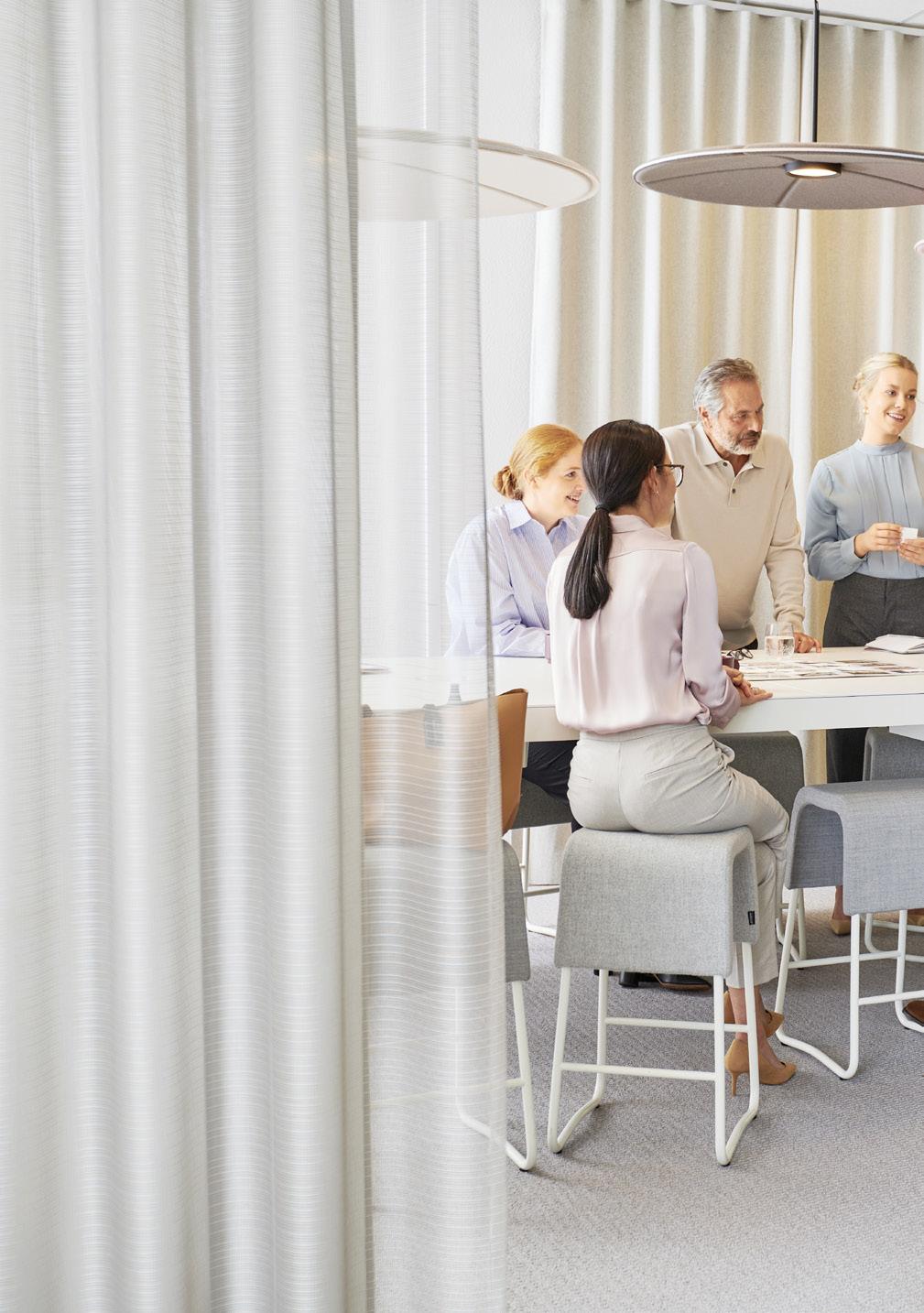
42
definition
Social responsibility means that the employer should offer a good working environment, good working conditions and a living wage. It also means taking responsibility for the society in which we operate and counteracting corruption, as well as striving for a good local environment and respecting human rights. Our social responsibility covers not only the employees in our own operations, but also the people who work for the suppliers in our supplier chain.
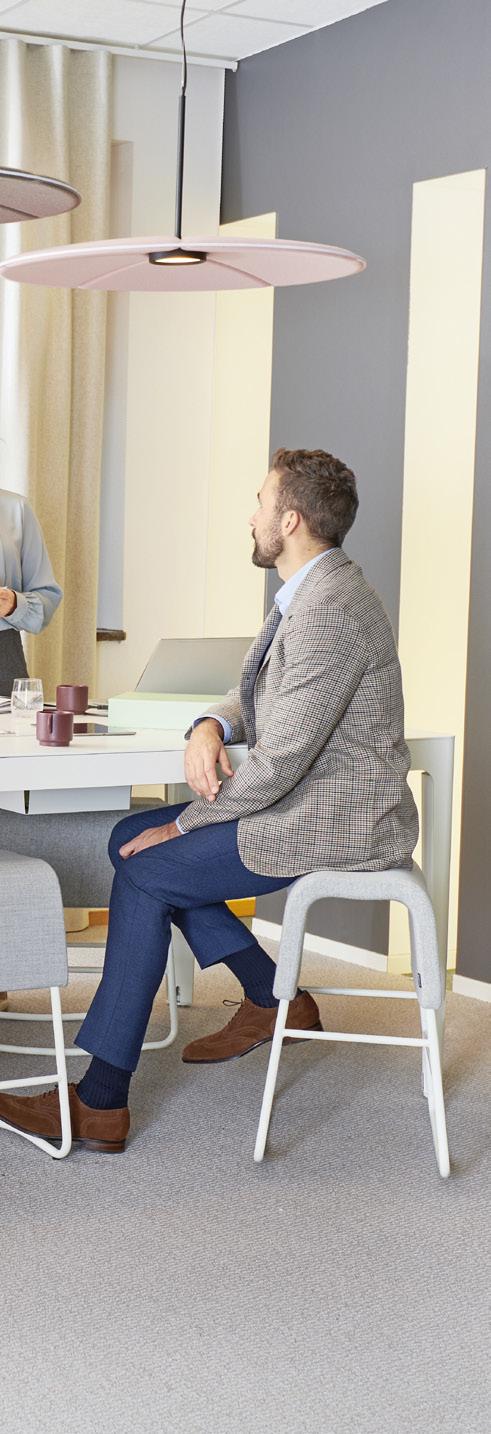
KINNARPS WORLDWIDE
NUMBER OF EMPLOYEES:
MEN WOMEN
Sweden 807 449 Germany 30 25 Norway 70 67 France 50 51 Poland 27 44 UK 19 17 Denmark 18 26 Belgium 13 23 Switzerland 12 13 Hungary 5 11
TOTAL 1051 726
MEN WOMEN
TOTAL 63% 37%
43
FOCUS AREA:
responsibility
Social
NUMBER OF MANAGERS:
Ensuring compliance with our requirements
We know from experience that it’s not enough just to specify our requirements. We also need to follow up and ensure that our suppliers are actually complying with our requirements. It’s easiest for us to influence our direct suppliers, while longer supplier chains are difficult to monitor, since we lack the necessary financial relationship. In order to monitor further down the chain, we need to have an agreement with the direct supplier.
One challenge for our organisation is to create a diverse workforce, and make full use of the skills in our organisation and in society at large. Another challenge is to offer all employees in the Group the same high level of working environment.
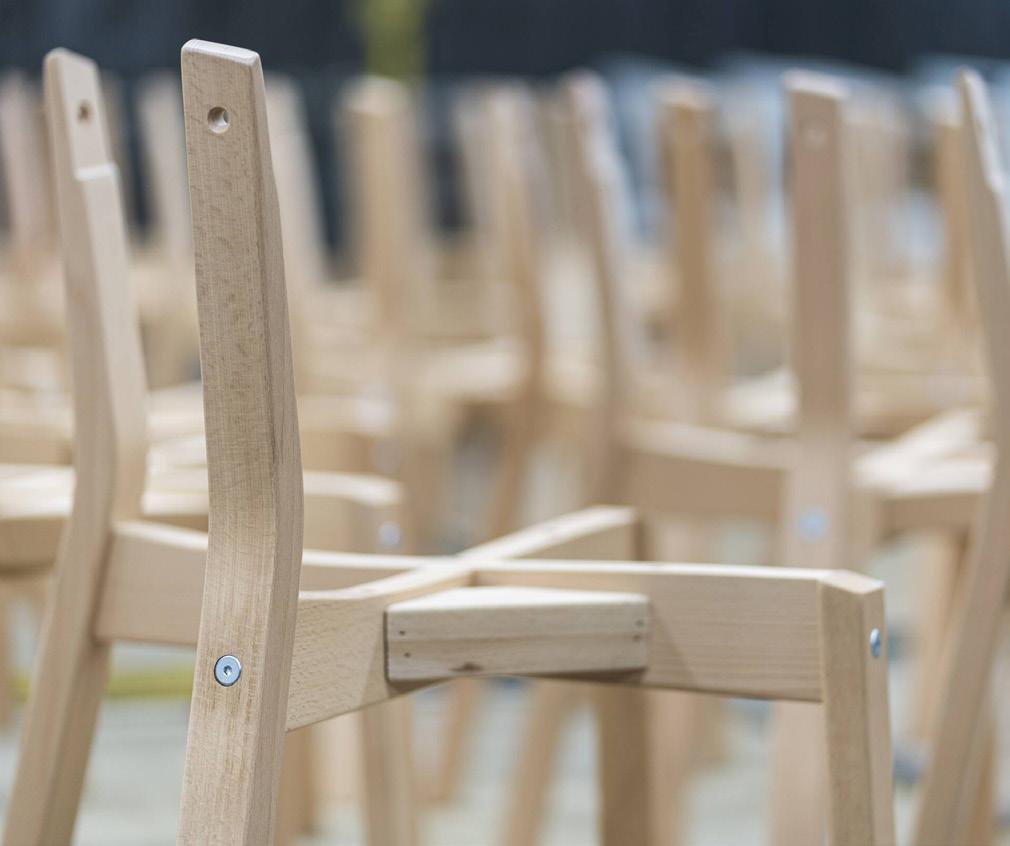
44
challenge
Follow-up of our own and our suppliers’ operations
our own operations Our Code of Conduct sets out our principles in the areas of human rights, labour law, environmental practices and anti-corruption. The Code is based on the company's core values and the UN's Global Compact.
All units and employees in the Group have a duty to respect and comply with the Code of Conduct. We have a whistleblower system that enables employees to anonymously report breaches of the Code without fear of reprisals. During 2022, we have received and dealt with one such whistleblowing incident.
Our rules of conduct concerning gifts and benefits are also made clear in our entertainment policy and in our procedures. The Kinnarps AB Group has a common diversity policy and works on the basis of a diversity plan with goals and measures for the period 2020-2022.
Kinnarps also conducts an annual salary survey to ensure that there is no discrimination. For example, we work with skills-based recruiting, for a more even gender balance, and to give employees the opportunity to develop their skills. We conduct regular employee surveys in which we follow both the employee index and the leadership index. We work systematically with health and safety at our units, and all production units within the Group are now health and safety certified according to ISO 45001.
We carry out risk assessments and inspections to prevent accidents and near-accidents. We systematically record and investigate accidents and near-accidents, and implement measures to ensure that the incident does not happen again. During the year, we’ve focused on raising awareness of the importance of reporting all incidents. The definition of incidents has been adjusted so that even minor incidents are classified as accidents. Incidents occur primarily in our production units, where relatively large amounts of material are handled manually. The health and safety work takes place in collaboration with the health and safety organisation.
the supplier chain We set requirements for all our suppliers through our Supplier Code of Conduct. In this Code, we clarify our expectations and requirements in connection with social responsibility. The Code is based on the UN's Global Compact. In addition to these basic requirements, we also set material-specific requirements, based on ecolabelling, for the material they supply to us. To a large extent, we purchase materials and components which are then processed and/or assembled in our own production facilities, but we also purchase ready-made products. Nevertheless, the requirements are the same.
We carry out a risk assessment of suppliers based on the country of manufacture, type of process and type of material. In the assessment of the country of manufacture, we base our work on BSCI’s country risk list. In cases where we deem there to be a greater risk of failure to fulfil the requirements in our Code, we conduct an on-site audit at the supplier's premises. If deviations are identified during the supplier audit, the supplier draws up an action plan to rectify the deviation. The supplier’s action is then followed up by evidence and verifications or on-site visits. Any deviations need to be remedied in order for us to initiate or continue with a partnership, and if the supplier refuses to address our criticisms, we will terminate the relationship.
In recent years, we’ve insourced the production of certain plastic articles and components for our factory in Skillingaryd, thereby taking responsibility for a larger part of the supply chain. We’re continuing the work of insourcing the manufacture of more plastic components for our own production.
2019 2020 2021 2022
Accidents resulting in absence 17 12 11 29
Accidents not resulting in absence 47 50 34 111
45
FOCUS AREA: Social responsibility
strategy
Our goal is to have verified good working conditions throughout our value chain, contributing positively to the social development on the sites where we and our partners operate. This goal is linked to the UN's Sustainable Development Goals 3, 8 and 10, 'Health and wellbeing', 'Decent work and economic growth' and 'Reduced inequalities'.
46
* Procurement of the products in our own range ELEVATED RISK
o BJ ecti V e PROPORTION OF PROCUREMENT VOLUME (SEK) CLASSIFIED AS LOW RISK OR ELEVATED RISK FOLLOWED UP BY AN AUDIT* LOW RISK ELEVATED RISK FOLLOWED BY AUDIT 0% 4% 96%
2030 long-term goal
analysis All suppliers that have been assessed as having an increased risk have been followed up with an audit. This means that 100% of our suppliers of materials and components for our products have either been assessed as low risk or have been audited.
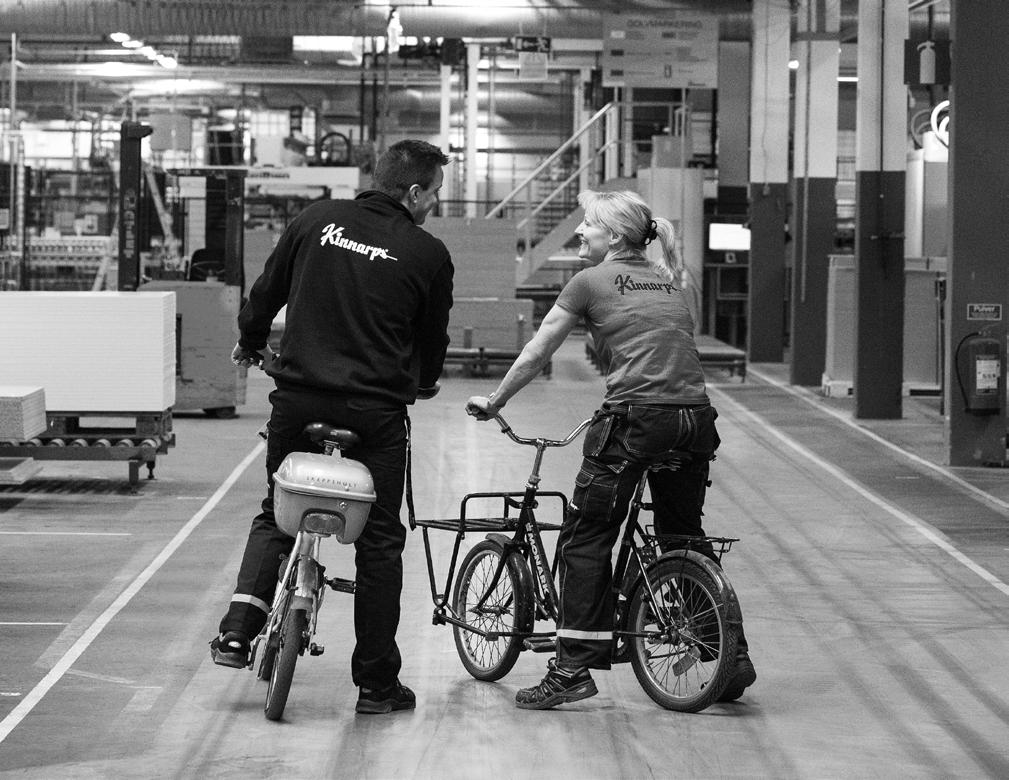
We’re working to insource the production of plastic components, primarily from suppliers in Asia to our production unit in Skillingaryd, Sweden. During the year, we also began insourcing metal production to our factory in Jönköping. The availability of and prices for materials worldwide have been a challenge in recent years. Kinnarps has been successful in securing the availability of materials and keeping the business running.
We minimise the risks through a strong supply chain at a regional and local level, and a good ability to spread the risks. The audits show that the conditions on our supplier sites are generally good. The most common shortcomings are minor ones linked to fire
protection and there are also instances of failure to use personal protective equipment, even though it is provided. When we conduct follow-ups of measures taken by the suppliers, we see that there have been improvements and that our work has been effective.
2025 Goal
100% of our purchasing volume should be classified as low risk or elevated risk followed up by an audit.
47
FOCUS AREA: Social responsibility
Circularity
Just because something is circular doesn’t automatically mean that it’s sustainable. At Kinnarps, we focus on sustainable circularity. We do this by creating interior design solutions and furniture that last over a long period of time.

48
definition
Circularity is about keeping materials and products in use for as long as possible. It’s also a business area with great potential for improvement, as every year we throw away about 10 million tonnes of furniture in the EU. With circular business models and services, we can not only extend the lifespan of existing furniture, but also design new products using recycled materials and in a way that makes them easier to update.
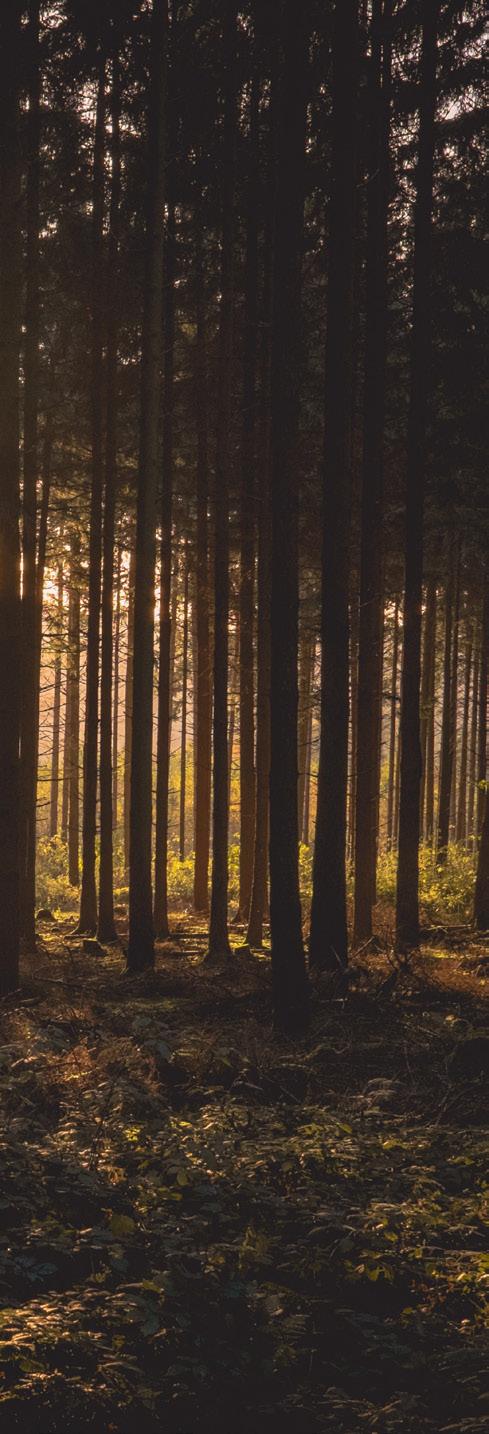
49 100% MAGNESIUM 70% CHIPBOARD 20% STEEL 50–100% CAST ALUMINIUM FOCUS AREA: Circularity
USE OF RECYCLED MATERIAL IN OUR MANUFACTURING
Increased circularity
The best way to reduce the environmental impact of a product is to prolong its lifespan and optimise its use. Our industry has traditionally worked with linear flows and business models. The great challenge lies in changing these flows to make them more circular. The crux of the matter is to develop cost-effective solutions. Reuse is labour-intensive and so we need to find models in which any savings are not swallowed up by increased labour or transportation costs.
It may also be challenging to ensure that products designed to be reused and refurbished maintain a good quality, and meet product safety and chemical content requirements. Our ambition is to increase the use of recycled material in our products, but we are often hindered by the fact that the recycled materials do not fulfil quality requirements, for example those relating to durability or the colour-fastness of fabrics.
Sustainable circularity is when products are designed and manufactured to be updated –right from the start! Here you can see one of our office chairs with its replaceable parts.
A LONG-LASTING CLASSIC Kinnarps’ classic 6000, 8000 and Plus task chairs all belong to the same product family and thanks to their smart and ergonomic features more than 4 million units have been sold. The first version was launched as long ago as 1993 and in 2001 an update with a new seat and back design was introduced – the Plus chair. The chairs are based on the same platform, with a focus on ergonomics and modularity. The easy replacement of various seat components facilitates both repairs and design updates. This means that these chairs can last and be used for a very long time.

50
challenge
SEAT CASTORS SPARE PARTS FOR CONTROL MECHANISMS BACKREST HEADREST ARMREST STAR BASE
Circular product design and new business models
product design When we develop new products, we integrate circularity from the start. We focus on creating high-quality products with a long lifespan. The products are also tested in our accredited test laboratory in order to ensure that they fulfil our strict quality requirements and standards. We test height-adjustable desks three times more than the standard, and we’ve also created over 50 of our own test methods that we use in product development to simulate how products are used in real life, as a means of testing their longevity.
We design products that are prepared for washing, renovating and updating, e.g. through removable upholstery and replaceable parts, such as tabletops and seats. We currently offer 29 product ranges with removable upholstery. By developing product ranges based on modular platforms that can be combined in different ways, we create flexibility for our customers to change and supplement the products as their needs change. We’re striving to increase the amount of recycled material in our products, and in the last few years we have begun to manufacture several components made from recycled plastic in our new plastic production in Skillingaryd. In product design, we make it a requirement that it should be possible to separate the different types of materials to facilitate recycling.
We participate in several different research projects aimed at utilising waste material, developing circular flows and measuring circularity.
serV ices and Business models The choice of furniture and how it is used affects its environmental impact. This is why we want to help our customers invest in the right furniture for the right needs, right from the start. We use our workplace analyses for offices, schools and care facilities to map out the needs of the organisation and use this data to create an business adapted and flexible solution with conscious furniture choices. By buying or leasing both newly manufactured and reused furniture, use can be
optimised and the furniture circulated according to changing needs.
We also carry out inventories, evaluations and action analyses of existing interior design. This provides important knowledge about how the interior design can be reused, renovated or updated. Frequently used furniture is subject to wear and tear, and we offer a number of different care services to ensure that it lasts over time. Furniture washing and maintenance services keep the customer’s interior design looking good and lasting for longer. If parts of the furniture need replacing or updating, our wide range of spare parts offers plenty of solutions.
In order to minimise the time when the customer does not have access to the furniture, and to reduce unnecessary transportation, we strive to maintain the furniture on site at the customer’s premises or in direct connection with our new mobile renovation truck. We carry out major renovations such as reupholstering and repainting in our factories, which enables us to provide existing furniture with a completely new look or new functions. Where possible, we make use of components from items of furniture that can no longer be used in their entirety as spare parts for other products. Only when none of these options is possible will the worn-out interior be separated and recycled at reputable recycling companies.
51 strategy FOCUS AREA: Circularity
2030 long-term goal
Our goal is for all our products to be designed for a long lifespan, and for our interior design solutions to be part of a circular flow that prolongs the life of products and materials. We aim to use more recycled materials in our products and find innovative ways of using the leftover material from our operations. This goal is linked to the UN's Sustainable Development Goal no. 12 'Responsible consumption and production'.
PROPORTION OF RECYCLED WASTE FROM OUR OWN OPERATIONS
2019 2020 2021 2022
Material for recycling 28% 30% 28% 31%
Material for energy generation 68% 68% 66% 65%
Landfill 1% 1% 3% 3%
Hazardous waste 3% 1% 3% 1%
* Production in Kinnarp, Jönköping, Skillingaryd, Tranås, Vinslöv and sales subsidiaries.
analysis We’ve succeeded in increasing the proportion of material recycling to 31%. We’re working to reduce, remove or replace packaging materials of inbound components for our production. Among other things, during the year we began to send back containers for glue and hardener to our supplier, who reuses the containers. We’ve also started to use fabric bags, which we make in-house from fabric remnants, for transporting plastic seat shells from our factory in Skillinaryd to Kinnarp. These fabric bags replace plastic bags and are repeatedly reused. Through collaboration with a supplier, we’ve started to recycle waste pieces of ABS plastic lipping and we estimate that we will recycle 1.5 tonnes of ABS strips per year.
During the year, the blue truck concept has been expanded to include products from Materia, which reduces both the need for packaging material and the amount of waste by reusing blankets as packaging material instead of single-use packaging.
2025 Goal
35% of the waste from our operations should be sent for material recycling.
52
o BJ ecti V e
SERVICES THAT PROLONG THE LIFE OF FURNITURE
WORKPLACE ANALYSES
Map and identify the needs in your environments with our workplace analyses for office, education and care.
SUSTAINABLE TRANSPORTS
Reusable transport packaging and full responsibility for assembly and implementation according to your drawing.
MOVING AND RELOCATING
Whether you’re moving your furniture within your premises or relocating to a new address, we’re here to help.
HOLISTIC ERGONOMICS
Gain new knowledge on sustainable and successful work environments by our lectures and workshops.
INVENTORY AND ACTION PLAN
Get an overview of your interior, establish its value and find out how it best can be maintained, updated, placed and used to function for your current and future needs.
BUY CIRCULAR ONLINE
Shop both new and refurbished high quality furniture in Kinnarps Online Store.
FURNITURE SERVICE ON LOCATION
We can refurbish furniture at your place or in our specially equipped service truck.
WASHING OF FURNITURE
Keeping your furniture clean is key for maintaining an attractive workplace. By washing furniture, you’re also prolonging the lifespan.
REFURBISHING AND UPGRADES
Refurbishing, renovations and upgrades give new life to your furniture and prolong the overall lifespan. New colours and upgrades can put your existing furniture to new use.
RECYCLING
We help to recycle furniture that has reached its maximum lifespan, in an environmentally friendly way.

53
FOCUS AREA: Circularity
Case: Psykiatrins Kvarter in Borås, Sweden
Psykiatrins Kvarter is a major investment in bringing together psychiatric care in one clinic at Södra Älvsborg Hospital. It’s also a significant investment in using recycled furniture to create a sustainable circular flow. “Interior design is an important element of healthcare, and we’re pleasantly surprised by how good recycled furniture can be when the solution is well thought-out and well planned,” says project manager Pernilla Jansson.

Psykiatrins Kvarter in Borås consists of a new star-shaped building and a renovated older building linked together by a newly built main entrance. The purpose of the project has been to bring all psychiatric care in the catchment area together in one place and create more fit-for-purpose spaces for both patients and staff.
“We don’t want our clinic to feel like a closed institutional facility – we want it to feel welcoming and supportive of the patient’s independence, freedom and self-reliance, while also feeling peaceful, safe and secure for everyone moving around the building,” says Pernilla Jansson. What also makes the project special is that about three-quarters of the items of furniture in the older building have been reused, with many of them being refurbished, refreshed and customised by Kinnarps. “The requirement was that the new and reused furniture should comply with the same high environmental requirements and well thought-out interior design concepts to last over time,” says Pernilla Jansson.
Kinnarps updated and renewed 600 of about 900 items of furniture in total.

Before and after. The classic Kinnarps’ chair Valv was given a completely new look in green.

We didn’t think much of the old interior design could be saved, but after the renovation you can’t tell the difference between the reused and newly produced furniture. Everything feels equally fresh and blends well together.
Jansson Project Manager Psykiatrins Kvarter Södra Älvsborg Hospital
54
Pernilla
Harmonising shades of green. The Vigor armchair has been given a makeover with new upholstery. The Remus table in a matching colour for a sustainable whole.
One important factor in a truly sustainable circular flow is that the furniture is made in a sustainable way from the outset, using environmentally friendly and high-quality materials. The fact that a large proportion of the furniture that was reused had originally been made in Sweden by Kinnarps simplified the process and helped to maintain the circular flow in the project. In Kinnarps’ factory in Skillingaryd, seats and backrests were provided with new sustainability-certified fabrics/artificial leather, and the underframes were spray and powder coated. The furniture was then transported back to Borås in Kinnarps’ distinctive way, wrapped in reusable blankets instead of single-use packaging and transported in Kinnarps’ own trucks running on fossil-free fuel.

“In this case, 20-year-old products were given a new lease of life and can continue to be relevant and support the clinic’s activities. The longer the life cycle of an item of furniture, the lower its environmental impact. This is why it’s extremely important to us that our furniture can be used over a long period of time and thus achieve a low life cycle cost," says Peter Göransson, Kinnarps Borås.
Pernilla Jansson is more than satisfied and convinced that reuse will become increasingly common in Region Västra Götaland and at Södra Älvsborg Hospital.

“Sustainability arguments are compelling. The environmental and economic aspects are obvious, but there are social aspects too. Everyone working here can take pride in our efficient use of resources, and since we’re a taxpayer-funded operation, reuse also creates legitimacy for us in the local community,” she says and continues:
“While we have tried to reuse as much as possible in the past, we haven’t always had sufficient knowledge, resources and procedures. We’ve now learned a lot from both White and Kinnarps, and have seen that it works fantastically well if you work consciously and methodically in both the design and implementation phases.”
FACTS
Project: Västfast and Södra Älvsborg Hospital psychiatric unit, Sweden

Architect: White Floors: 6 Completion: 2022
Sofas
55
and easy chairs from the Humlan range were allowed to keep their birch legs, but were reupholstered with artificial leather.
FOCUS AREA: Circularity
The lnvito armchair was redesigned in muted shades of blue.
Ergonomics
Ergonomically designed workplaces have a number of obvious advantages. Not only do they counteract stress-related illnesses and repetitive strain injuries. They also enhance well-being, and increase creativity and productivity.

56
definition
At Kinnarps, ergonomics is about looking at the big picture. We call this holistic ergonomics – the total experience of a space. A perspective that takes into account all the physical, organisational and social ergonomic factors. Furniture, layout, air quality, temperature, light, colours, materials, sound and movement, as well as culture, leadership, and a sense of security and belonging are all important factors in creating a functioning whole.
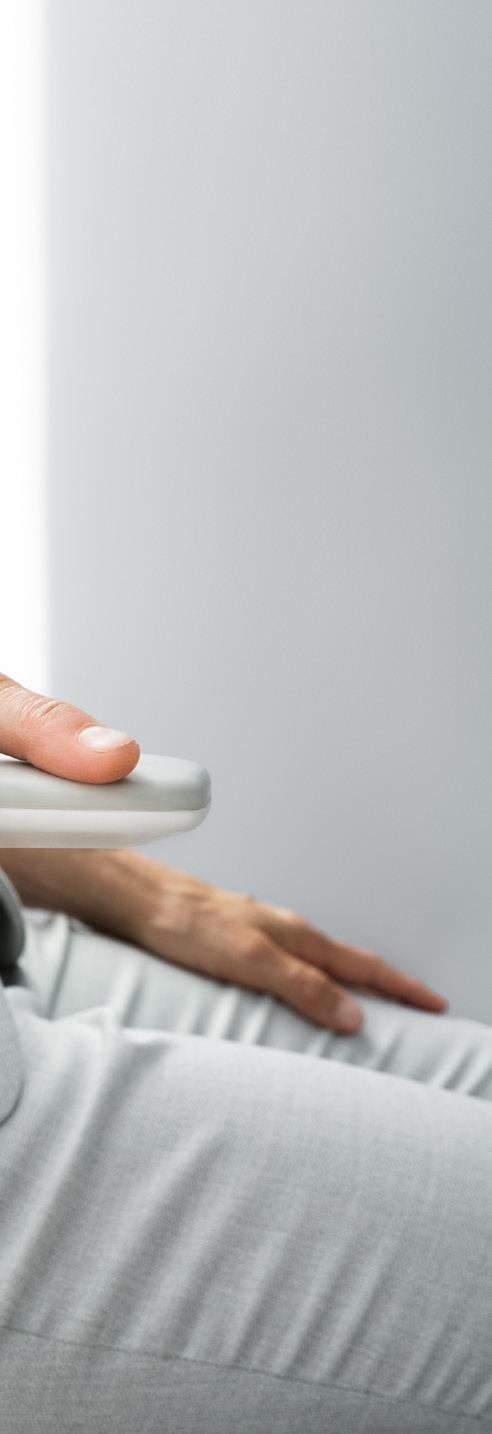
57
FOCUS AREA: Ergonomics
2030 long-term goal
Our goal is to create working environments that promote the health and well-being of everyone who spends time there. Holistic ergonomics is central to our interior design solutions, and our products are inclusive and customised to human needs. This goal is linked to UN Sustainable Development Goal no. 3, 'Health and well-being' and no. 4 'Quality education'.
challenge
A holistic perspective on ergonomics
m oV ement and Variation We spend a lot of our waking hours sitting still, which can increase the risk of cardiovascular diseases, obesity, diabetes, stroke and depression. By integrating customisation, movement and variation into our products and solutions, we can create ergonomic working environments that reduce various types of health risks. Our challenge is that employees don’t always understand how to use the products correctly, which means that the positive effect is lost and the investment is ineffective.
BehaV ioural changes The surroundings are also important when it comes to an ergonomic and sustainable working environment. Acoustics, lighting and ventilation affect our energy levels, and how spending time in the space makes us feel. It’s therefore important that each individual has the ability to determine and influence their immediate surroundings.
Rules for how the spaces should be used, such as quiet zones for concentration, further enhance this. One challenge for us is to contribute to behavioural changes, so that users learn to exploit the opportunities offered by a varied space.
s ee the whole picture But it’s not just the ergonomics of using the product that’s important to bear in mind. It’s also important to consider all situations involving the product – such as cleaning, moving or storing. A lightweight chair with simple suspension facilitates ergonomics for cleaning staff; castors may make moving the chair easier; and foldability and stackability simplify storing it. One challenge for us is therefore to take a holistic approach to ergonomics during product development in order to address multiple areas of application.
58
o BJ ecti V e
Increase knowledge about how the physical environment affects us
accumulated knowledge and experience In order to create successful interior design solutions that promote wellness and efficiency, it’s important for us to increase our knowledge of how the physical environment affects us. We therefore collaborate with reputable researchers, ergonomists and other experts to keep up to date with the latest findings relating to office, educational and healthcare spaces. We accumulate our expertise and experience in various types of reports, articles and magazines in order to inspire new ways of thinking about the physical environment and how it affects us.
product de Velopment In our product development, we always adopt a holistic ergonomic perspective and collaborate closely with professional ergonomists. This means that we don’t just consider the human body, but take into account all human needs – including psychological ones. We design products with an

inclusivity that recognises differences and not just the average, and understands that everyone has different abilities and qualities.
mapping needs In order to help our customers create sustainable and ergonomic spaces, it’s important to involve all stakeholders from the start. Their accumulated knowledge can be used to map out the needs that exist and the activities that will be carried out in the environment. We do this through our analyses, Next Office®, Next Education® and Next Care®, where we can help to facilitate the customer's process towards a new space using our specially developed tools. The results of the analysis process are then summarised in a report containing recommendations on how best to design an environment that is a sustainable investment for the people spending time there and for the business.
59 FOCUS AREA: Ergonomics
strategy
Case: Kontract
They see their vision of becoming the industry’s most attractive workplace and meeting place as an obligation. When IT consultancy company Kontract needed to change office, they enlisted the help of Kinnarps’ Next Office® workplace analysis in order to conduct a thorough review of their needs and opportunities. “Employee workplace satisfaction ratings have soared since the change,” says Lotta Grundin, Office and Business Support, Kontract.
The old premises were becoming cramped for the growing IT company, but in particular they were lacking important functions.
“We had very traditional furnishings that didn't suit our business, since our consultants spend a lot of time out with customers. Occupancy in the office varies greatly, and the old office did not match our need for flexible solutions,” says Lotta Grundin, Kontract’s project manager for the move.
In addition to being a challenge to efficiency and job satisfaction, the shortcoming also raised questions about how it was affecting community, collaboration and knowledge sharing in the organisation.
“Our office needs to be both an efficient workplace and an attractive meeting place that clearly provides our employees with added value. It has to offer spaces for different activities, but also help to create a sense of belonging and generate energy,” she says.
Management had already begun to discuss some of these issues, but they also recognised that a successful change would require a holistic view of not only the current situation but also the way forward.
“It was in this phase that we heard about Kinnarps’ Next Office ® workplace analysis and realised that it was exactly what we needed,” explains Lotta Grundin.
The project with Kontract started with Kinnarps’ workplace strategists guiding the management team to establish the vision, goals and framework for the project. Needs and habits were mapped out and the staff was involved.
Through lectures, workshops and an online survey, Kinnarps captured the needs of Kontract's staff and identified the organisation’s work patterns. The current situation analysis of the office was based on the factors of productivity and creativity, collaboration,
health and well-being, acoustics, light and air quality. In addition, they received support for the change process and planning of the office’s areas.
All this has resulted in an business adapted environment where staff can choose their workplace based on their task, activity or current mood, with, e.g., clear zones for low, semi and high focus.
It’s about several things. In part, employees should actually want to come into the office, and they should want to stay in the company. But it is also an investment in being an attractive employer for new talents when we recruit. We are always looking for staff, and to attract the best candidates, we need to offer the best physical environment.
Lotta Grundin, Office and Business Support, Kontract
The journey from a traditionally furnished office to a flexible, business adapted office must surely have had its challenges? Lotta Grundin responds with lightning speed. “No, it’s actually been very smooth and easy. This is partly because our employees are quite used to working like this, though the old office did not support them in it, and partly because with Kinnarps’ help we did the work from scratch. We also benefit greatly from our Playbook, in which we’ve collected rules, practical information and explanations for how our new workplace should ideally function, based on Kinnarps' analysis.”
In the project, it was identified that some furniture could be reused in the new environments. One such example was the 6000 office chair.
60
Project: Kontract, Örebro, Sweden
Number of people: 70
Architect: Mom Designstudio
Surface area: 618 Sqm
Completion: 2021
Lotta Grundin's statements were confirmed by the evaluation that Kinnarps carried out about six months after Kontract moved into its new office, reports Henrik Axell, responsible workplace strategist from Kinnarps. In area after area – collaboration, efficiency, creativity and well-being – the staff’s ratings of the office and the new way of working skyrocketed.
On a ten-point scale, the overall result is a shift from just over a five to almost a nine. “It proves just how crucial a workplace analysis is when you’re about to change your office. By basing what we do on sound mapping and knowledge, we can create tailor-made solutions that make interior design a sustainable investment for the long term,” notes Henrik Axell.
OVERALL RATING
PRODUCTIVITY AND CREATIVITY COLLABORATION WELL-BEING
ACOUSTICS, LIGHT AND AIR
The follow-up analysis shows that the rating of the office has gone up from 5.4 to 8.6. Kinnarps’ Next Office® workplace analysis collects data that makes it easy to follow up on how different areas are functioning.


61
CURRENT WAY OF WORKING BEFORE AFTER 5.4 8.3 5.1 8.6 5.3 8.6 5.2 8.6 6.5 8.8 5.4 8.6
FACTS
FOCUS AREA: Ergonomics
Risks and governance
Risk management is integrated into the internal processes of the management team and the Group by means of guidelines and work procedures. Continuity planning is carried out at Group level, and risks are also identified and managed on an ongoing basis in
the Group's various units, by means of the procedures and systematic risk assessments performed in the various risk areas. Measures are then implemented in each area to minimise the likelihood and consequences of an incident.
IN OUR OPERATIONS, WE HAVE IDENTIFIED THE FOLLOWING RISKS LINKED TO SUSTAINABILITY:
RISK AREA DESCRIPTION
ENVIRONMENTAL ACCIDENT RISKS
Environmental accidents involving leaks, spills or process errors.
WORKING ENVIRONMENT RISKS
Accidents involving personal injury, poor social or organisational working environment as a result of shortcomings in preventive health and safety work
MANAGEMENT
Procedures for handling chemicals and waste management. Contingency plans for spills and leaks. Training of employees.
Systematic HSE management through proactive risk assessments, regular inspections, clear working instructions and on-the-job training of employees.
SUSTAINABILITY RISKS IN THE SUPPLIER CHAIN
Environmental risks linked to production of materials and components. Infringements of the Supplier Code of Conduct.
Environmental requirements for materials and components. Social requirements in contracts and follow-ups through supplier audits.
PRODUCT
SAFETY RISKS
Safe use of products. Ergonomic risks linked to good working posture. Risk of the spread of fire.
Kinnarps' accredited Test & Verification Centre checks the products in accordance with EN standards. We also stipulate that our materials must meet all quality and fire safety requirements.
FIRE HAZARDS
Risk of fire in production units and other premises.
Systematic fire safety management with a focus on preventive measures, e.g. through fire safety inspections, suitable fire protection equipment and dialogue with stakeholders.
62
INDUSTRY ENGAGEMENT AND SOCIAL ENGAGEMENT
As one of the largest European suppliers of interior design solutions for working environments, it’s also our responsibility to drive development in sustainability issues. The Kinnarps AB Group is represented on the board of the 100 Group – an association that works for a more sustainable interior design industry in Sweden. Our commitment also includes a membership in Swedish and international FSC ®. We’re also part of the Möbelfakta criteria council for further development of the Möbelfakta labelling system and, during the year, we participated in the expert group for measuring circularity established by the Swedish Circular Economy Delegation.

The Kinnarps AB Group is a member of the Swedish trade association and employers' organisation the Swedish Federation of Wood and Furniture Industry (Trä- och Möbelföretagen, TMF) and the European trade organisation European Federation of Office Furniture (FEMB). We are members of Interior Cluster Sweden, where we are represented on the board. We work actively to develop furniture quality standards in Sweden and internationally through the Swedish Standards Institute (SIS), Comité Européen de Normalisation (CEN) and International Organisation for Standardisation (ISO).
management and responsi B ility
Governance of our sustainability work is based on our Sustainability Policy and Code of Conduct. These apply to the operations of the whole Group and are based on Kinnarps' core values. Our Code of Conduct is based on the UN's Global Compact and is also clarified for our suppliers in our Supplier Code of Conduct.
Our sustainability work is firmly anchored in the board and management team, and is an integral part of the Group's strategy: “Let the star shine”. The direction of sustainability work is further defined in our Sustainability Strategy. The Group management determines the direction and goals of the work, and the sustainability manager is responsible for the development and coordination of sustainability work in the Group. Locally, each manager is responsible for compliance in their area, and in larger units the work is led and coordinated by local quality and environmental functions.
Audits of the operations take place in units that are ISO 14001, ISO 9001 and ISO 45001 certified, and compliance with the Code of Conduct is monitored by means of supplier audits.
Governance and follow-up of our sustainability work has proceeded according to plan during the year, and is deemed to be functioning well.
63

64
Auditor's statement concerning the statutory sustainability report
To the Annual General Meeting of Kinnarps AB, Corporate ID number 556256-6736
Assignments and division of responsibilities
The Board of Directors are responsible for the sustainability report for the financial year of 1 September 2021 to 31 August 2022 and for ensuring that it is drawn up in conformity with the annual report.
Focus and scope of the audit
Our audit has been carried out in accordance with RevR 12 Auditor's statement concerning the statutory sustainability report. This means that our audit of the sustainability report has a different focus and a considerably narrower scope than the focus and scope of an audit in accordance with the International Standards on Auditing and generally accepted auditing standards in Sweden. We believe that this audit gives us a sufficient basis for our statement.
Statement
A sustainability report has been drawn up.
Malmö, 22 November 2022 Öhrlings PricewaterhouseCoopers AB
Mattias Lamme Chartered Accountant
65
KINNARPS GLOBAL MARKETING & COMMUNICATIONS / 8610980006 / 2210 | ALL INFORMATION IS SUBJECT TO CHANGE

































































